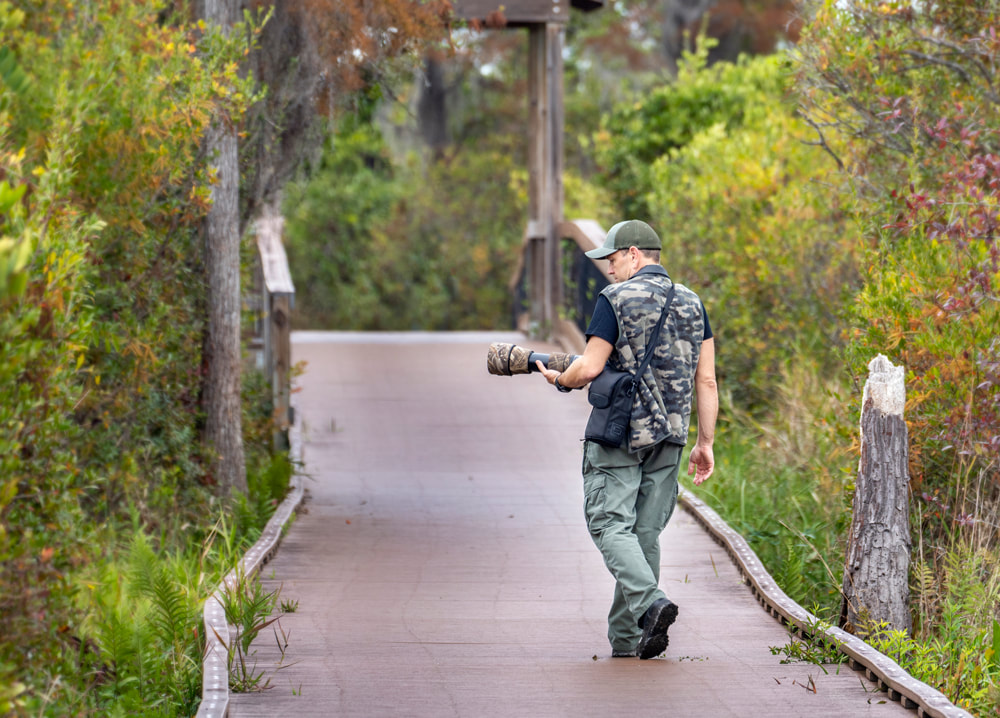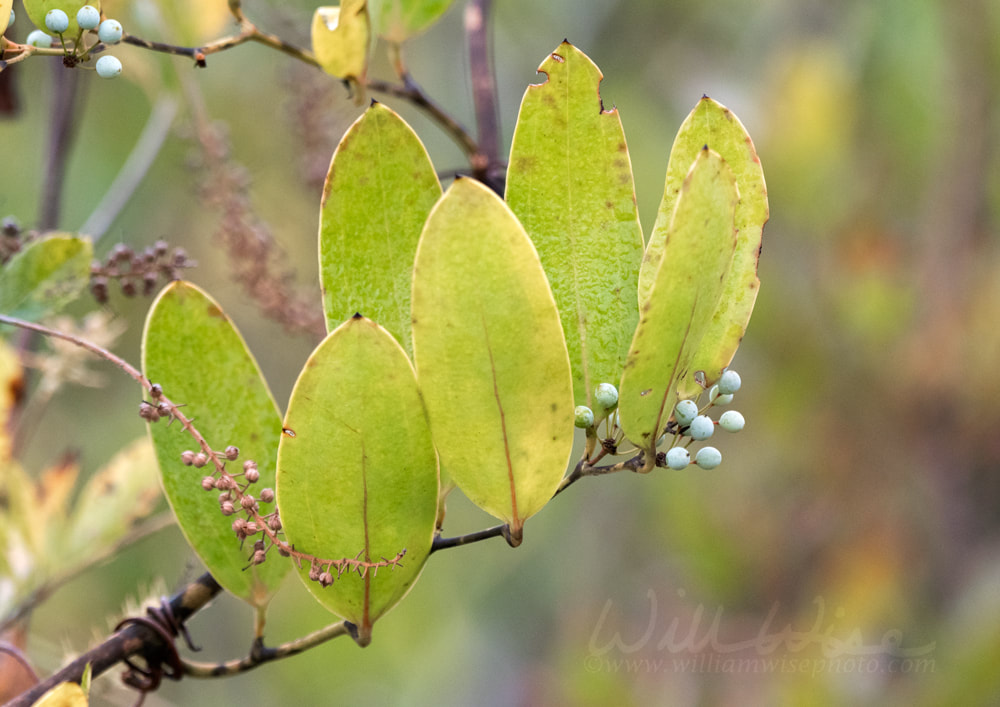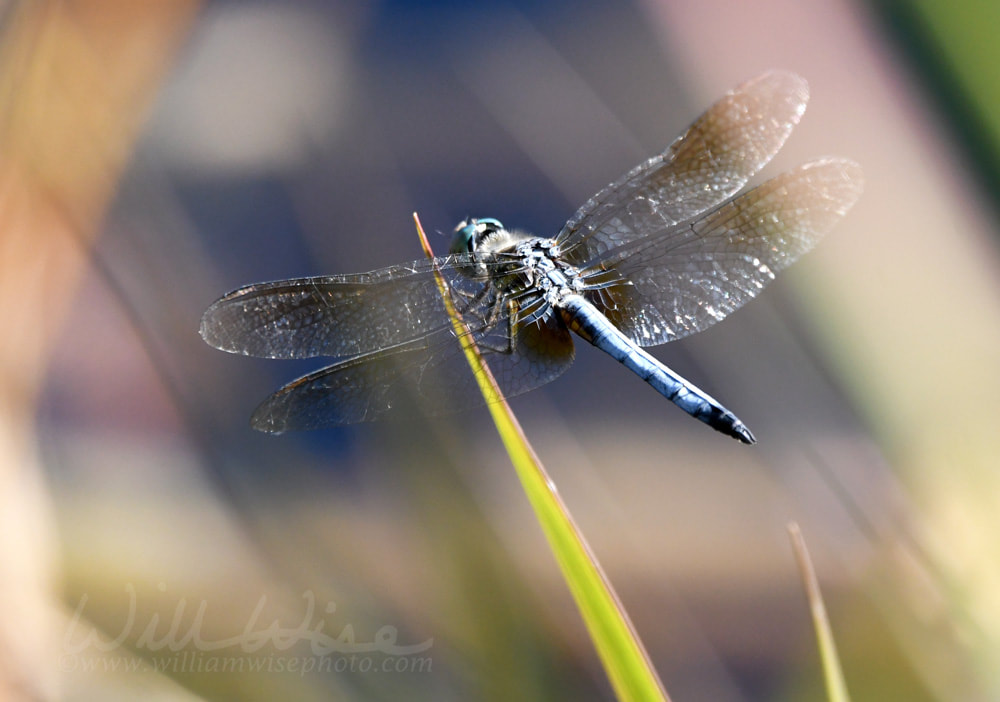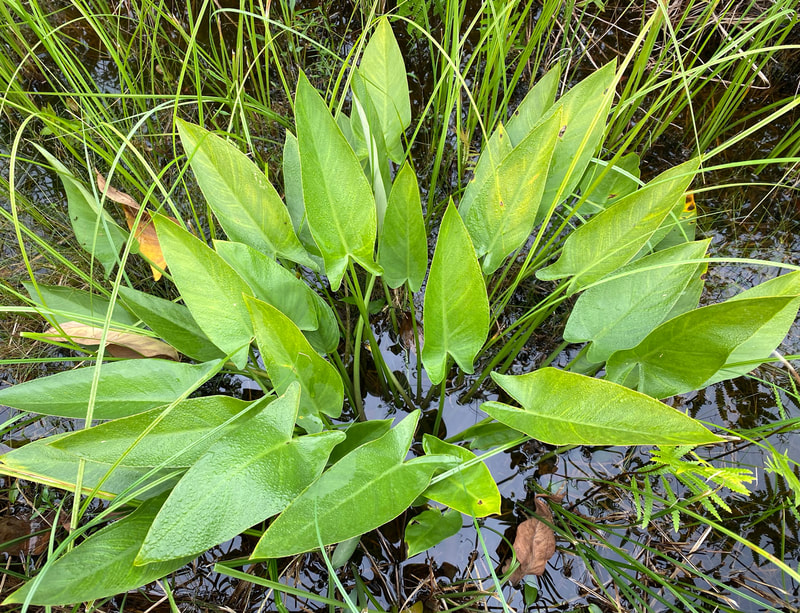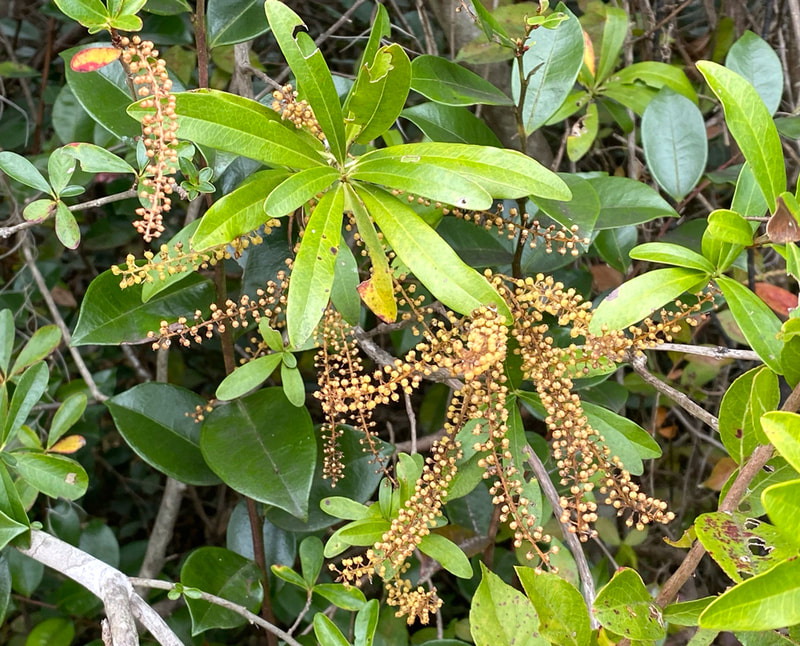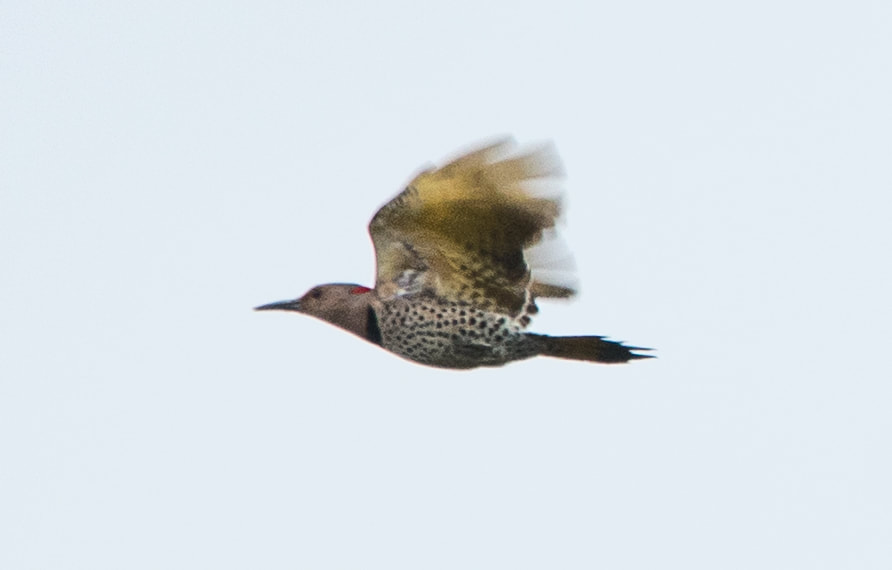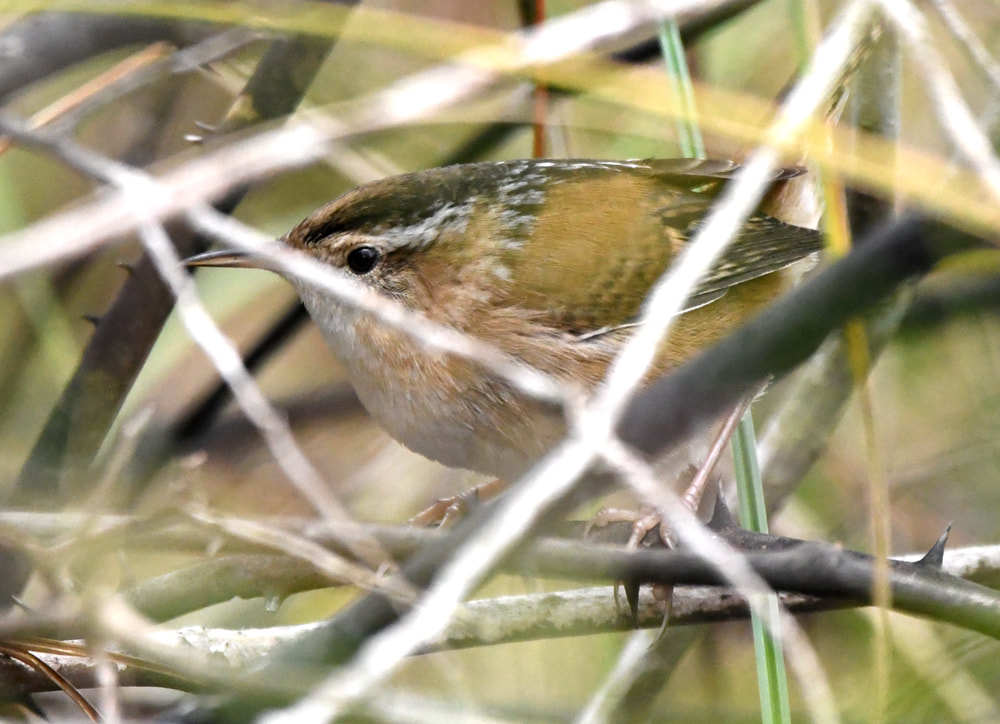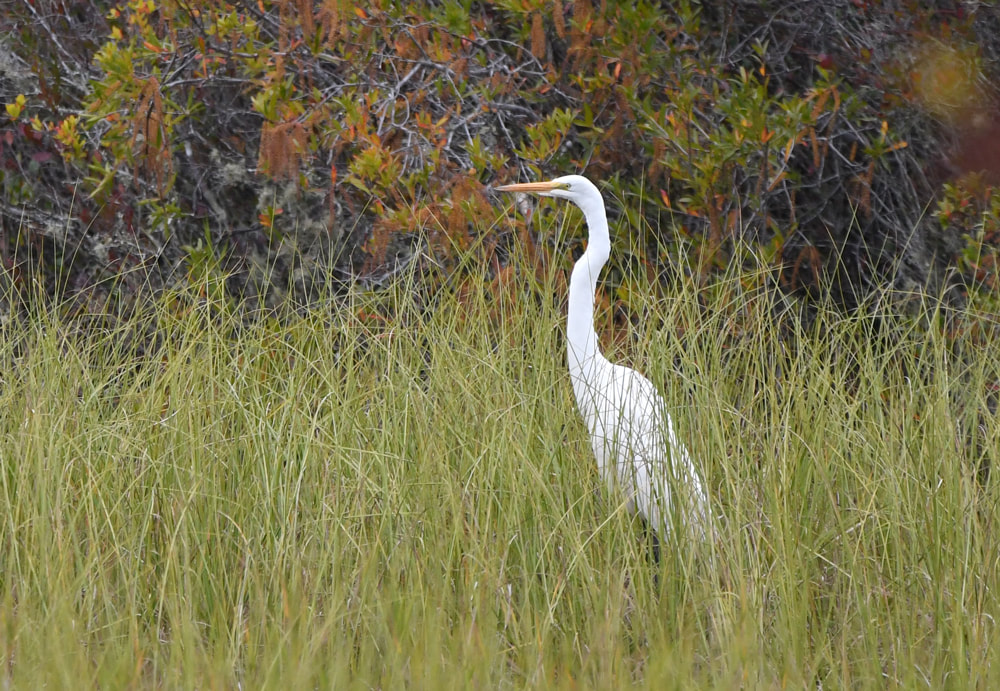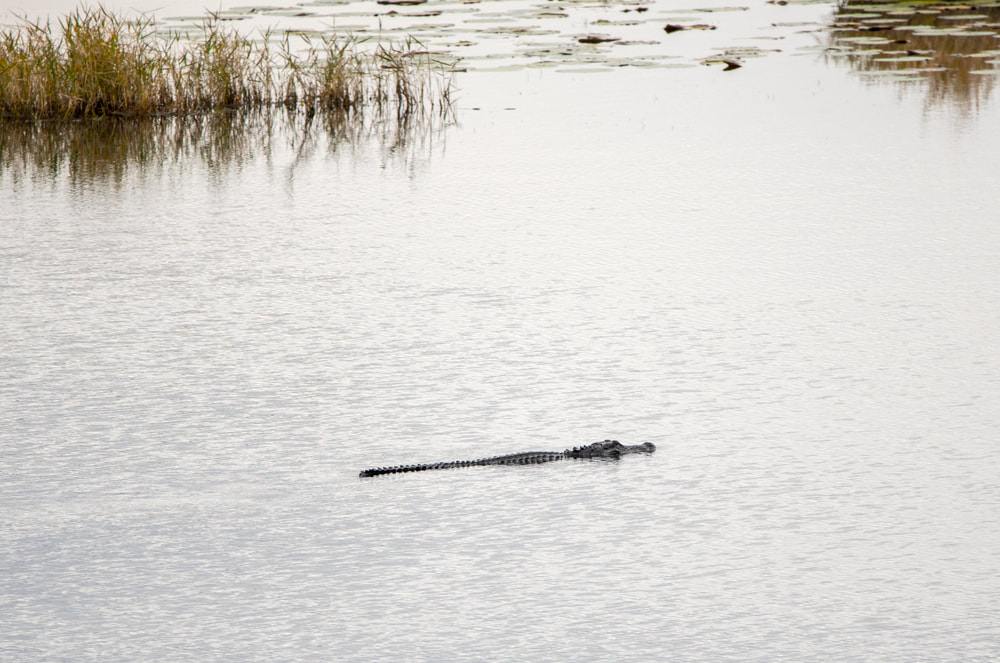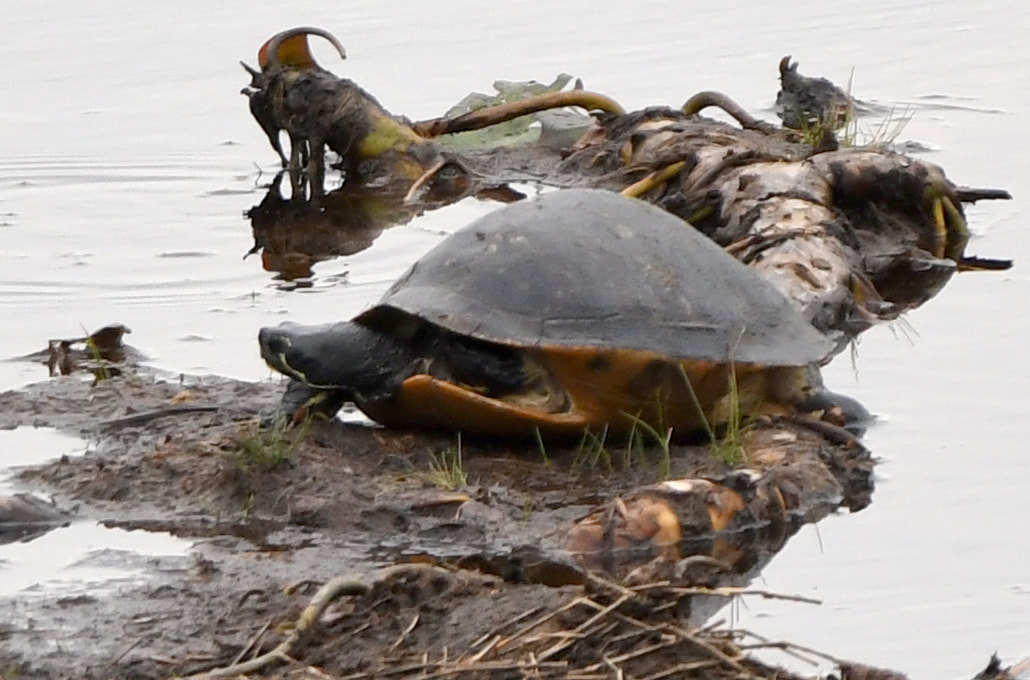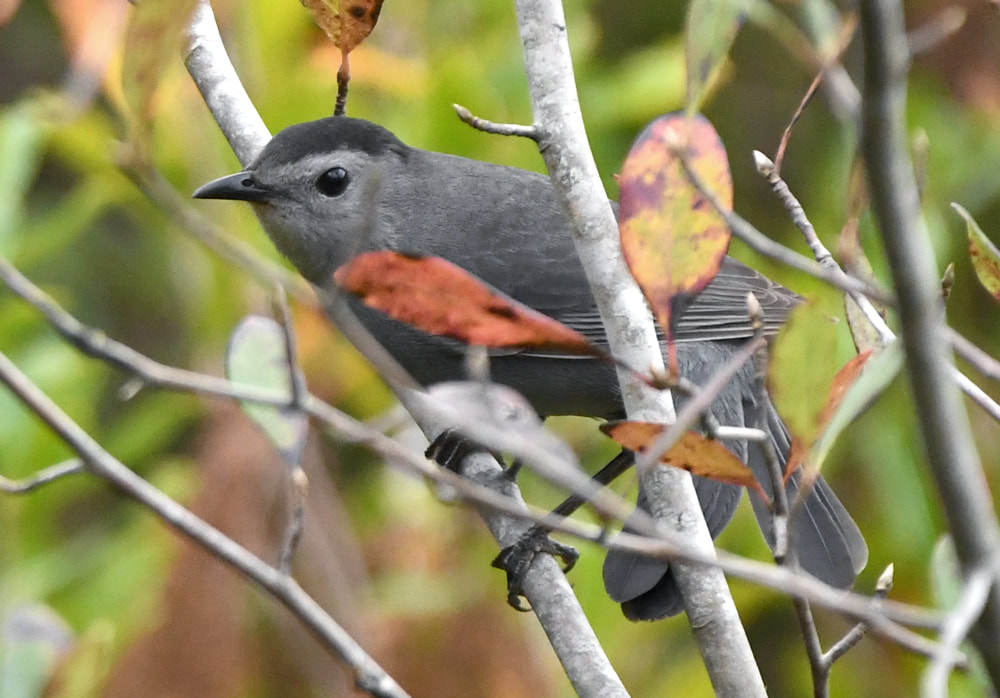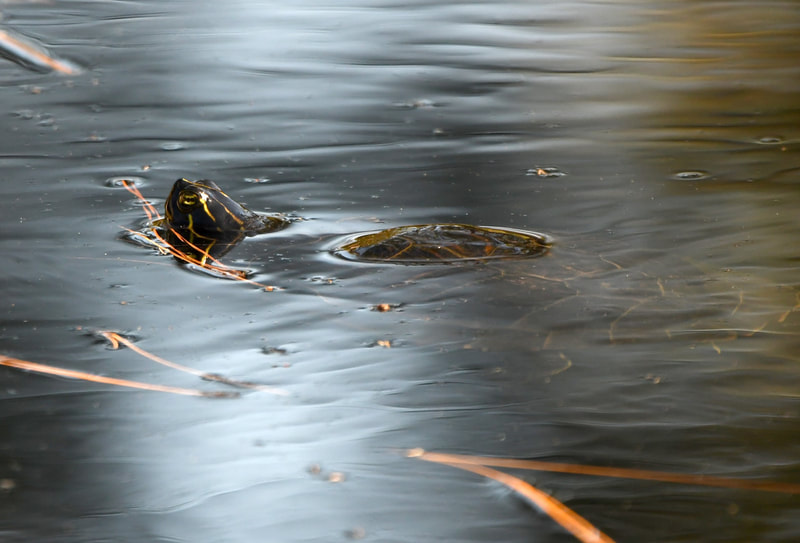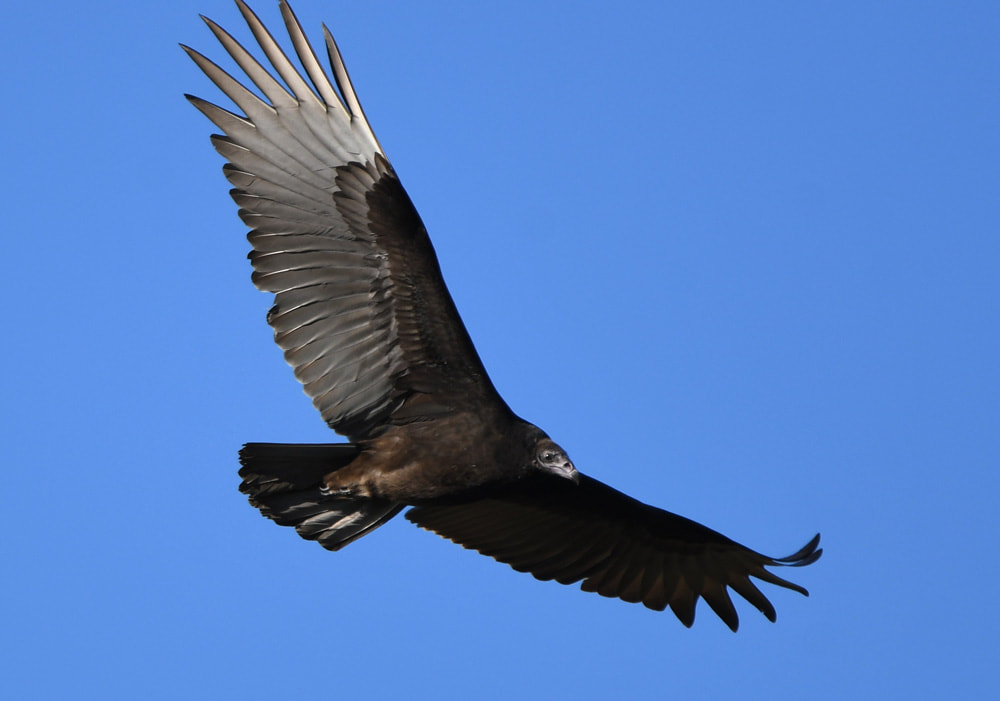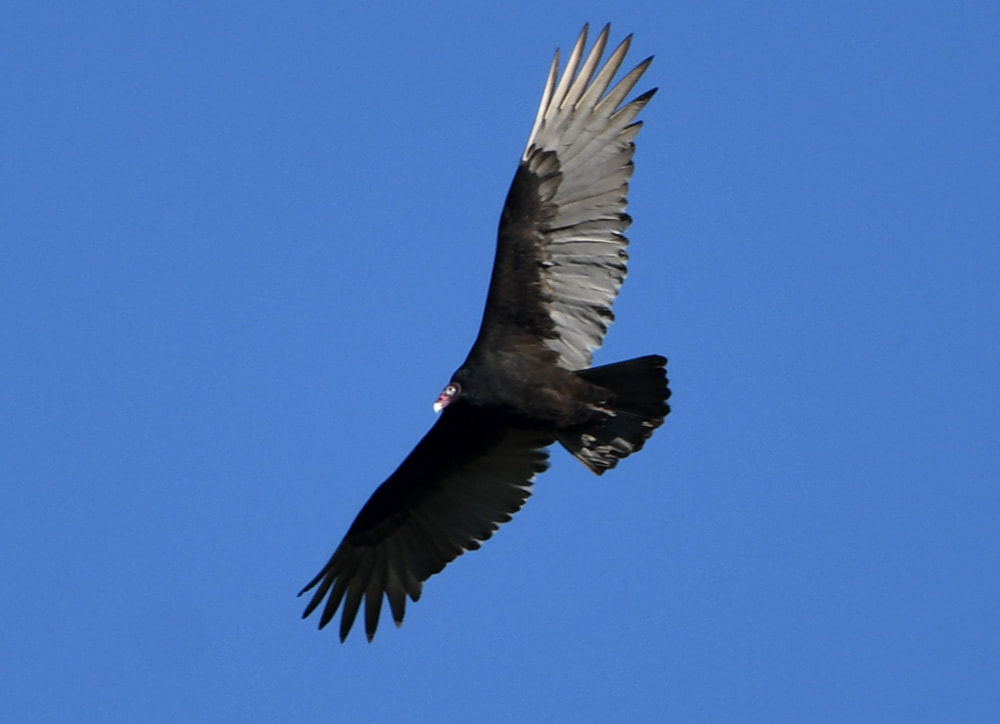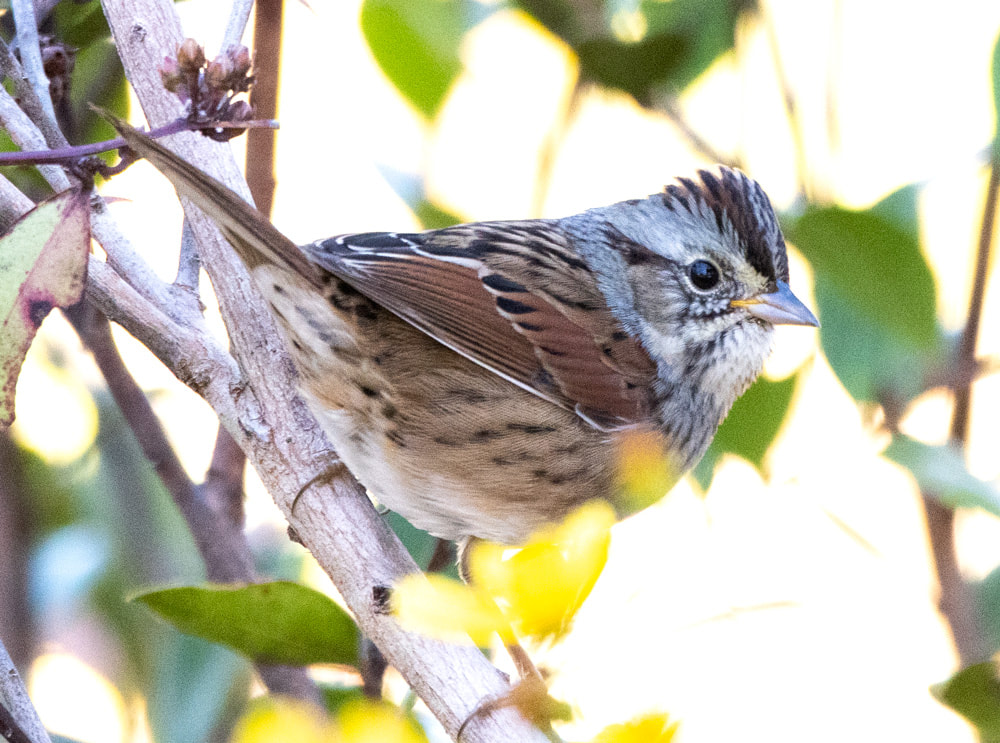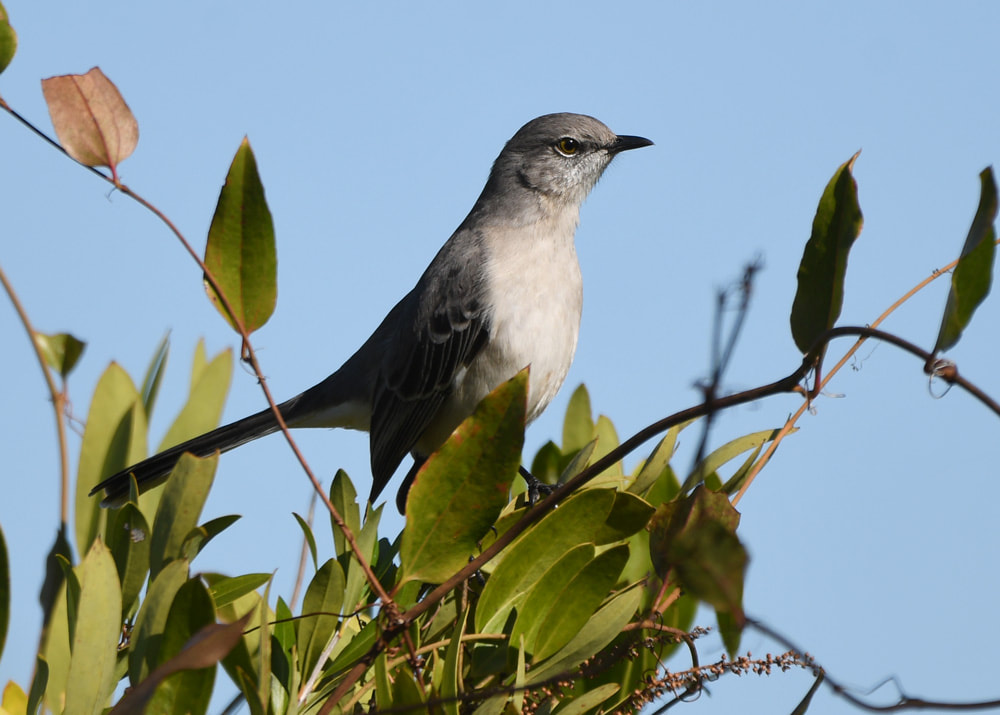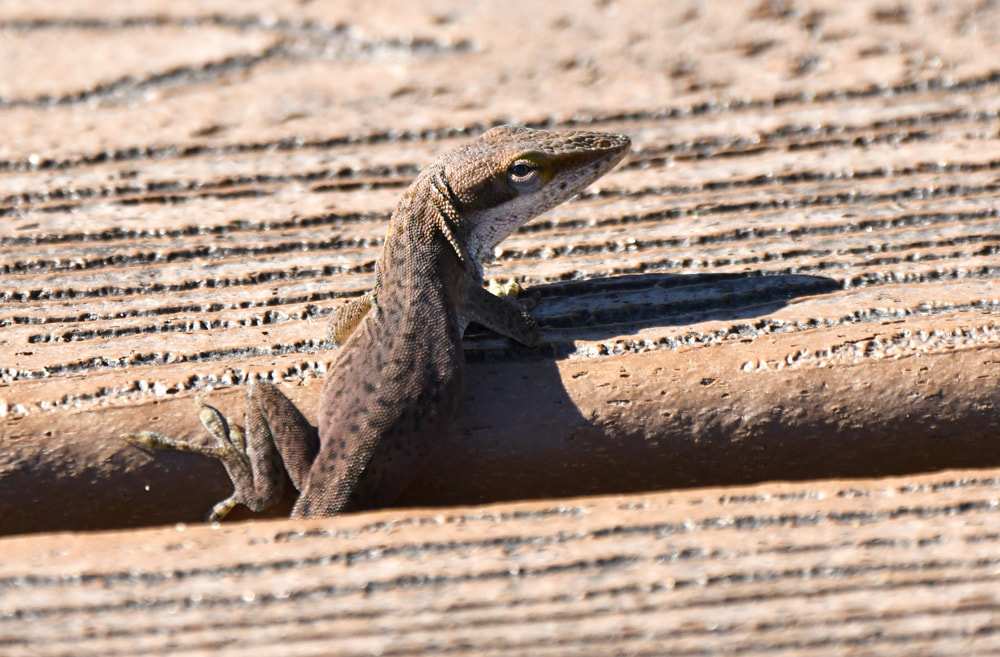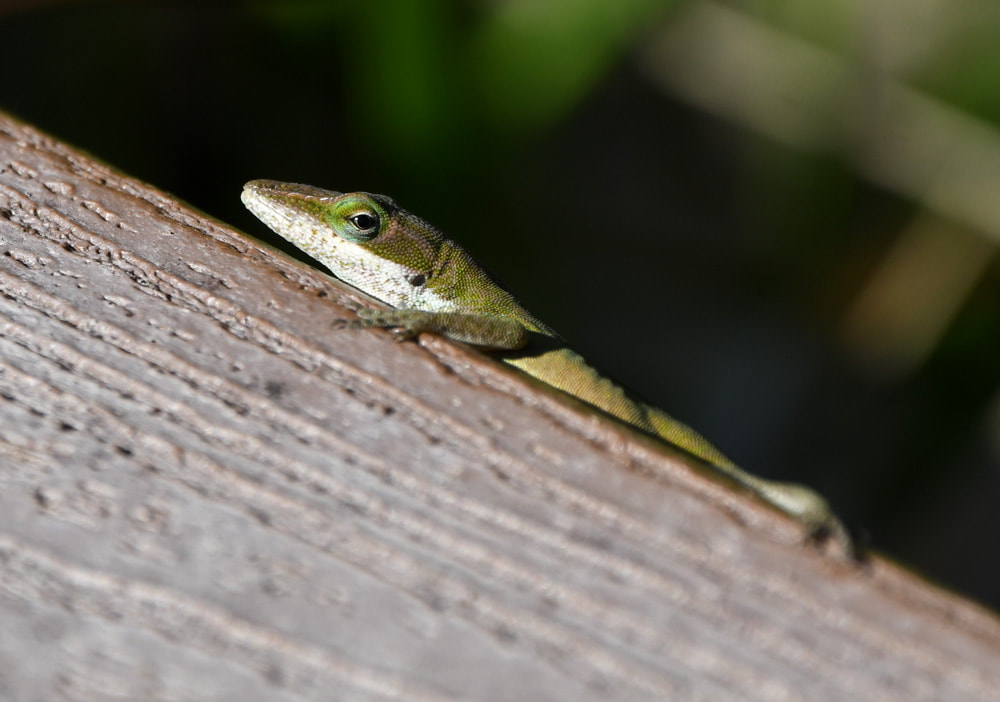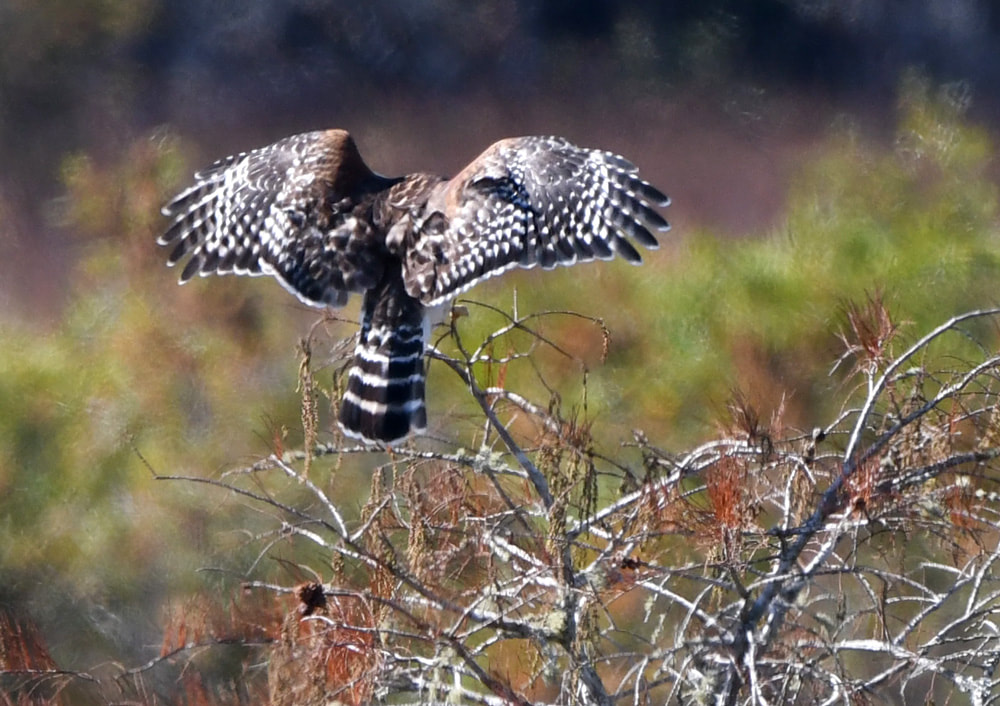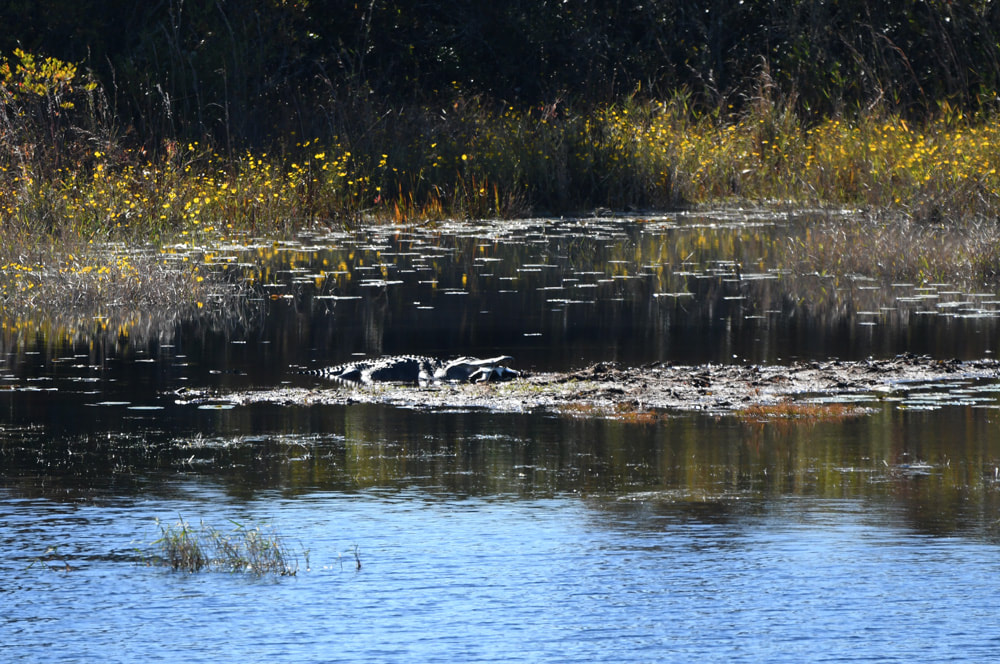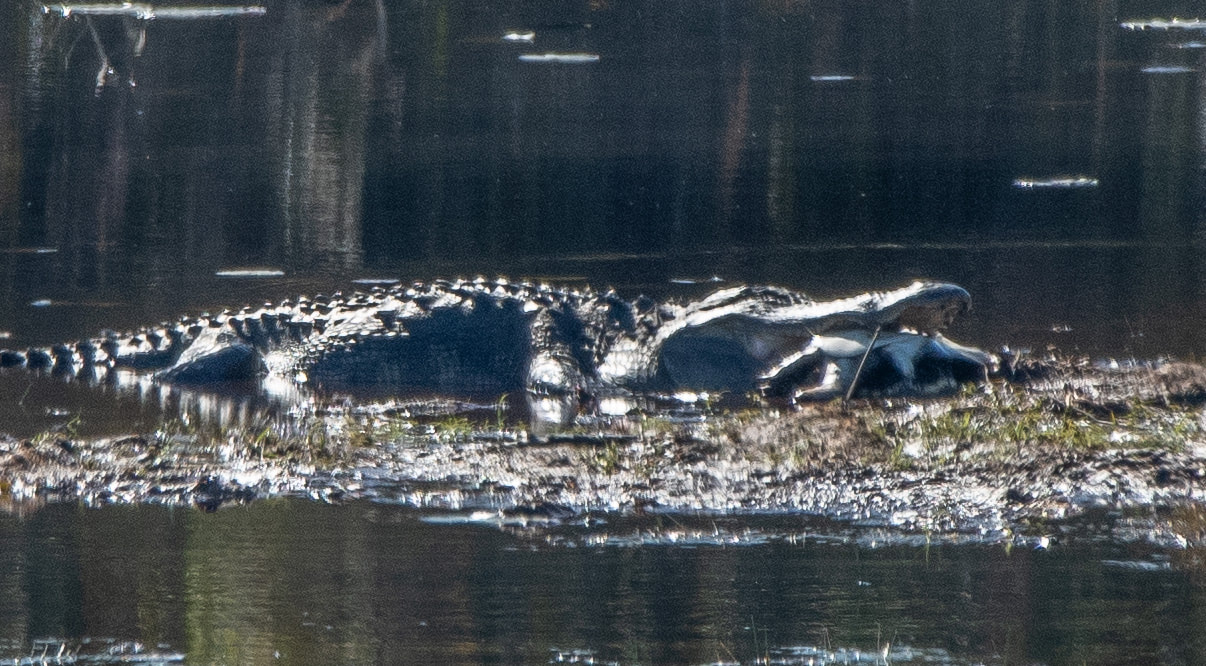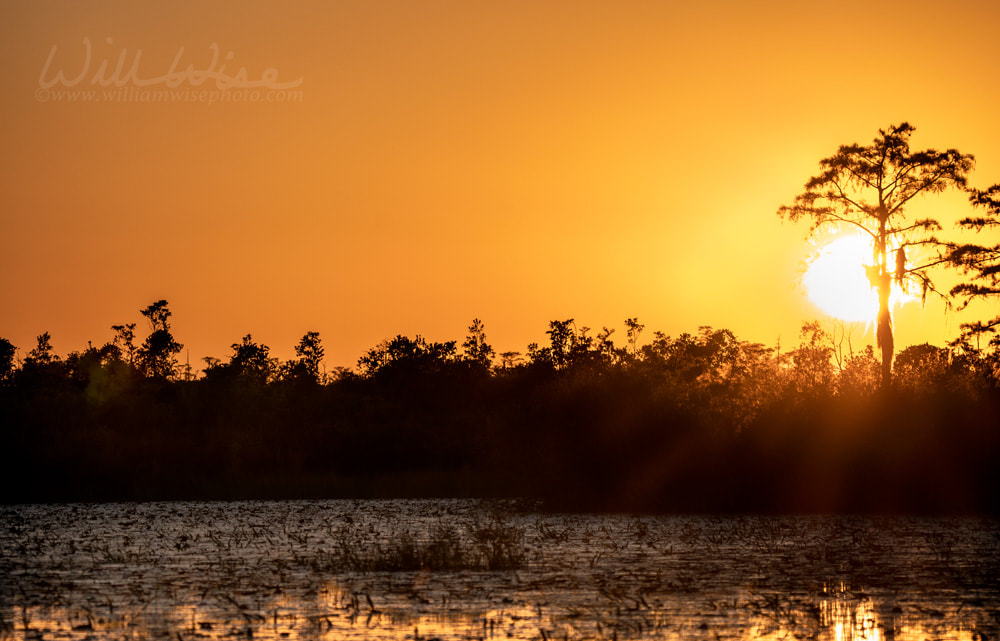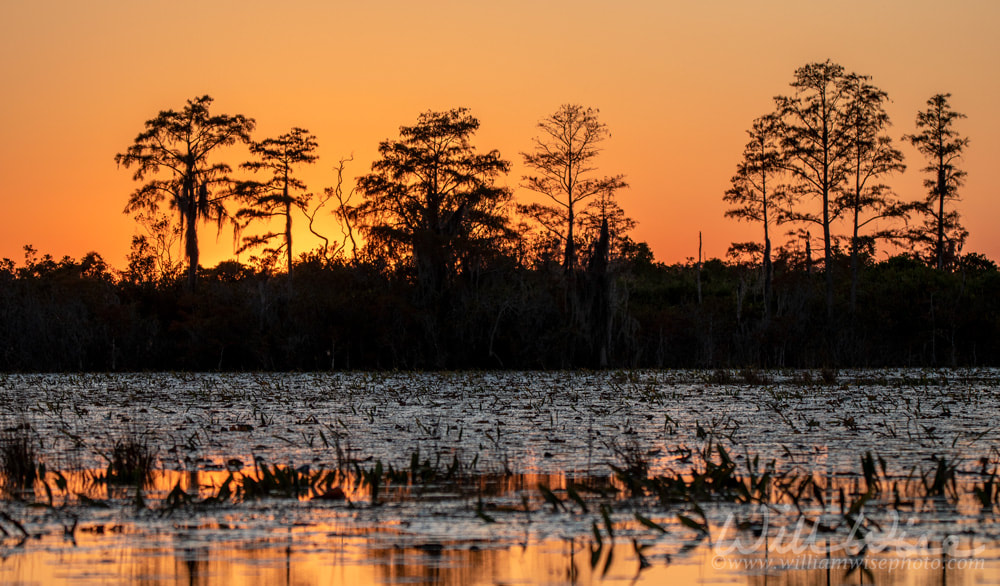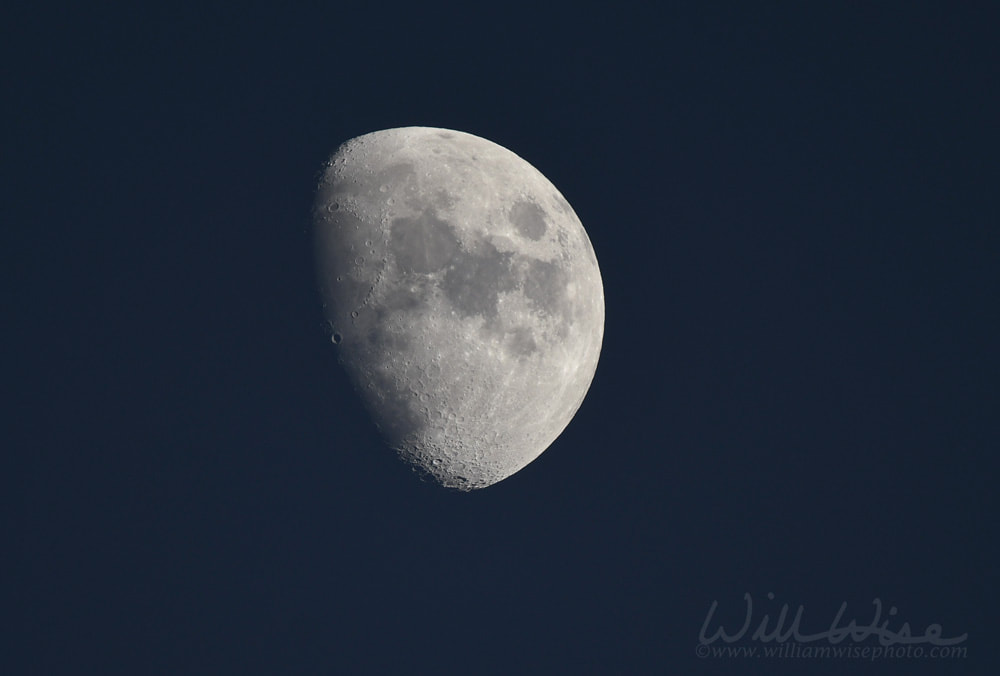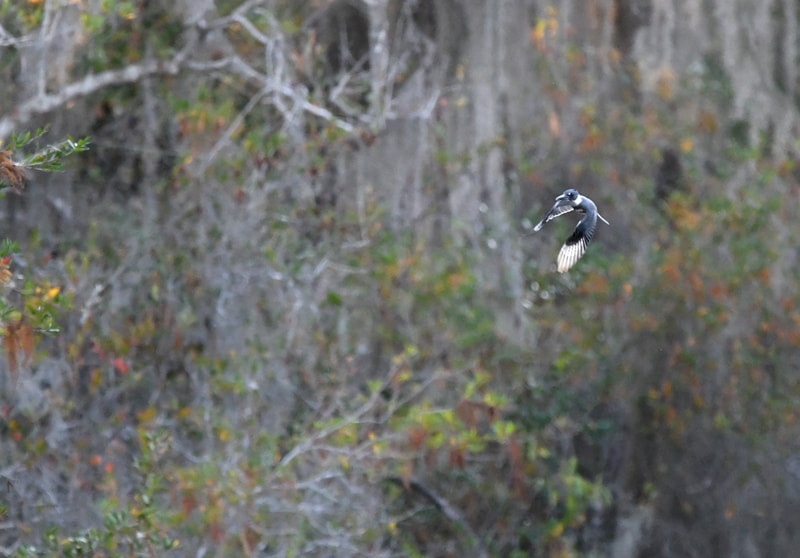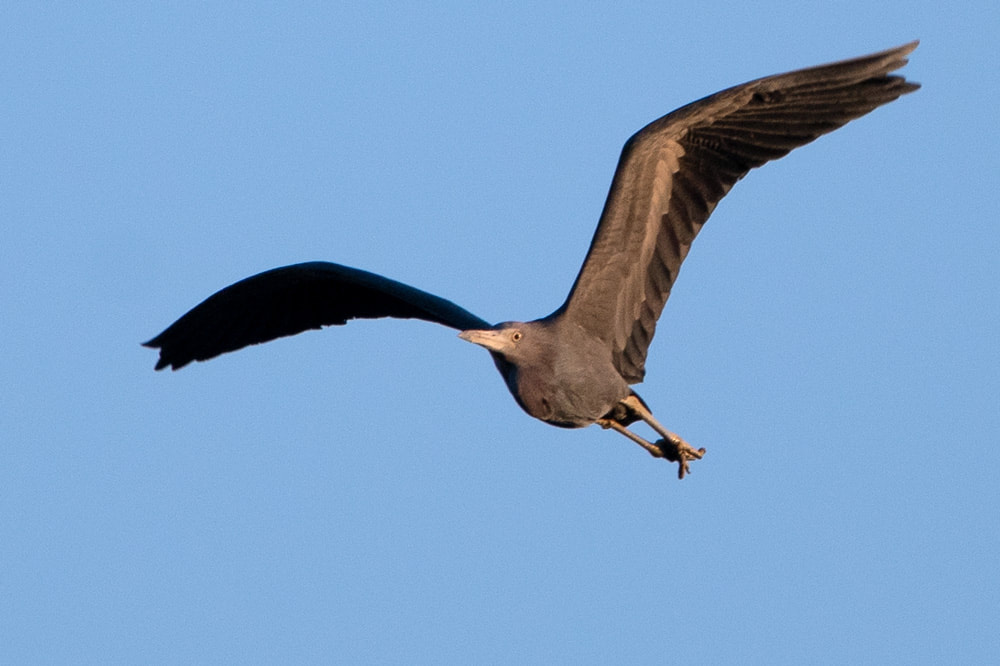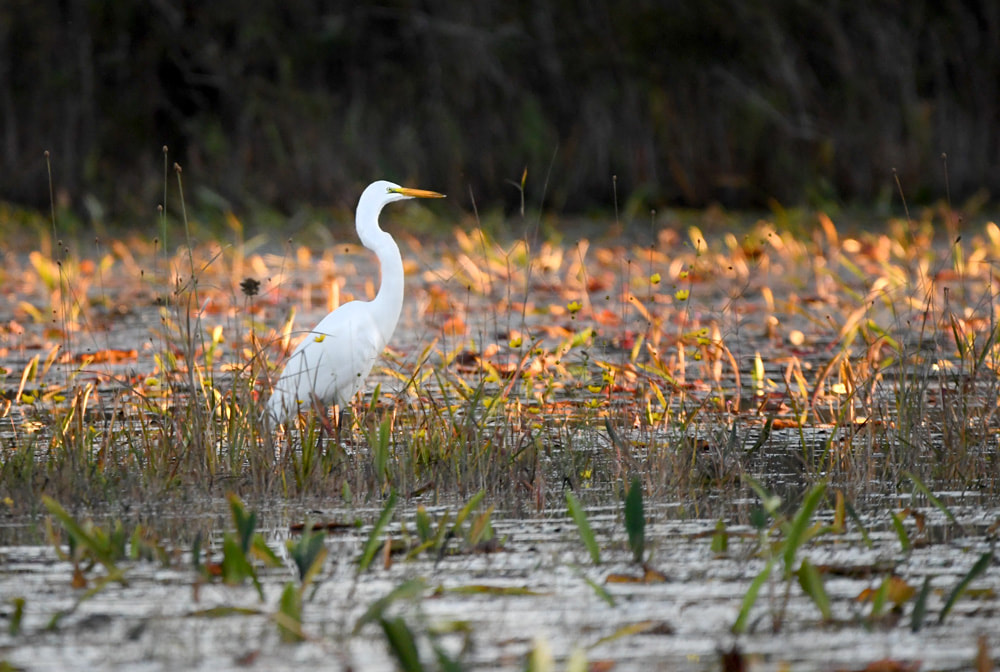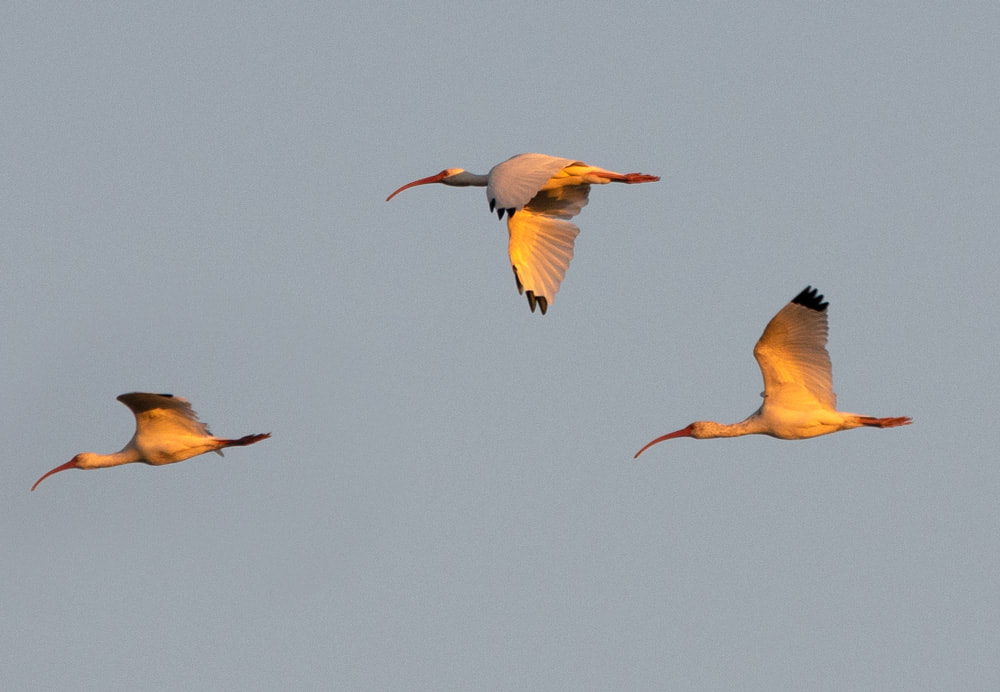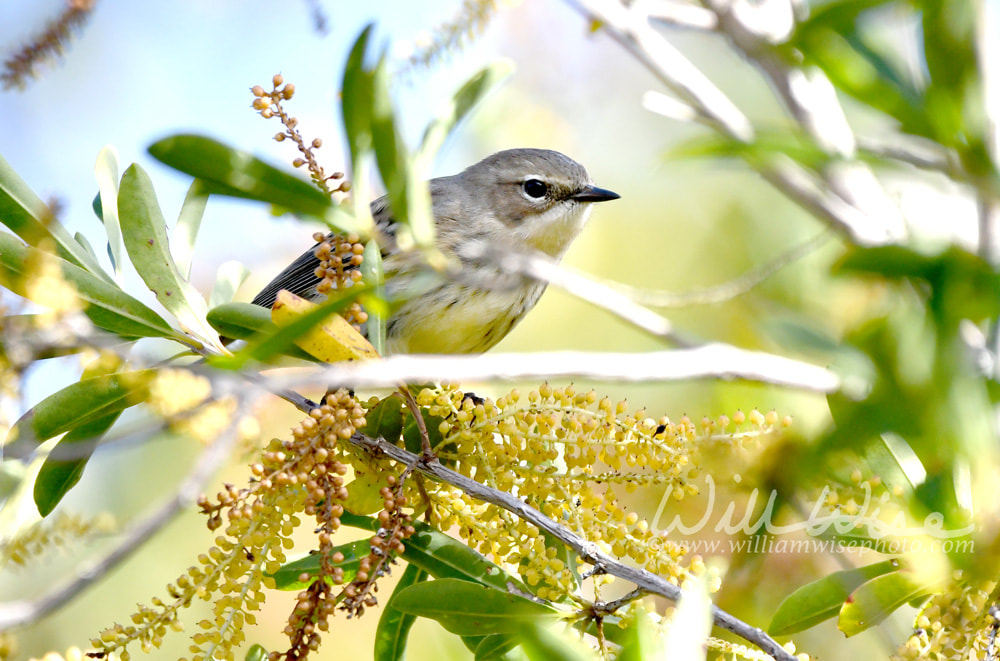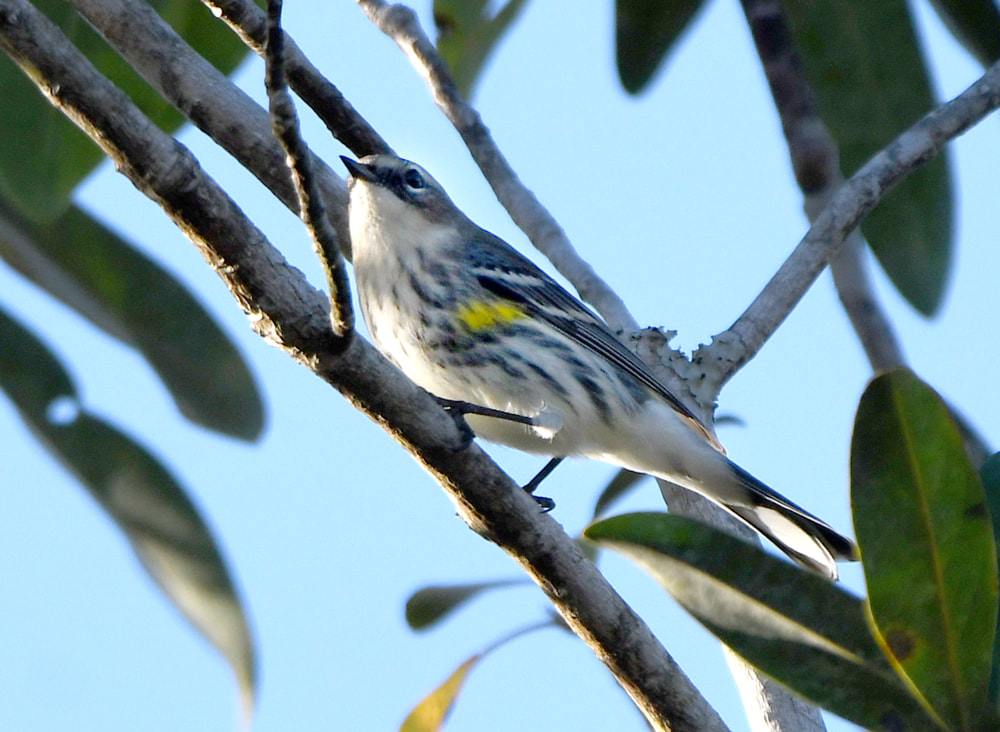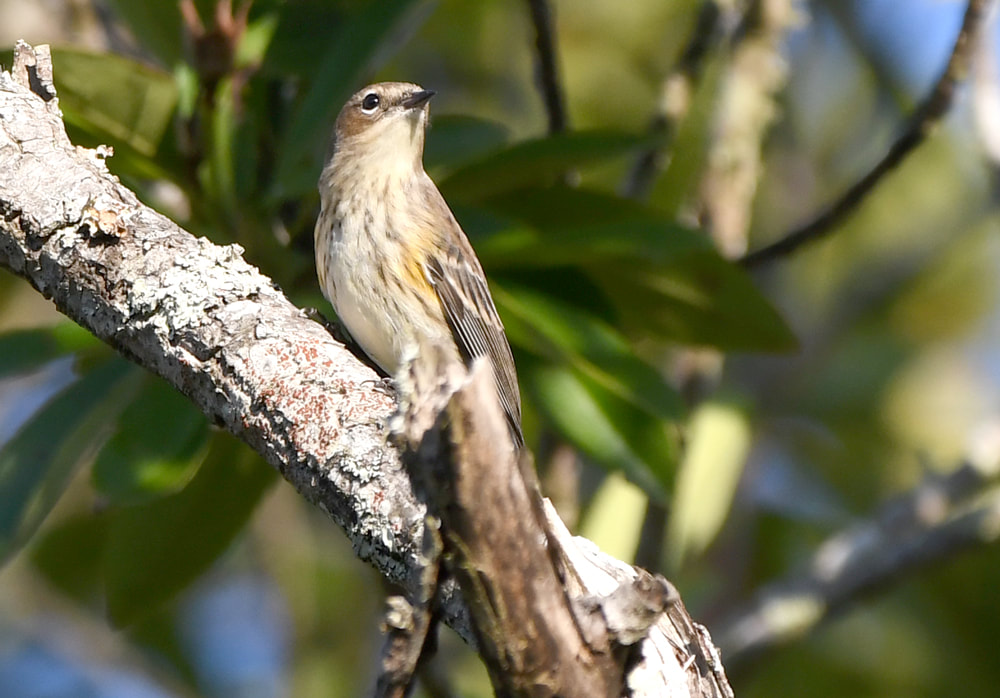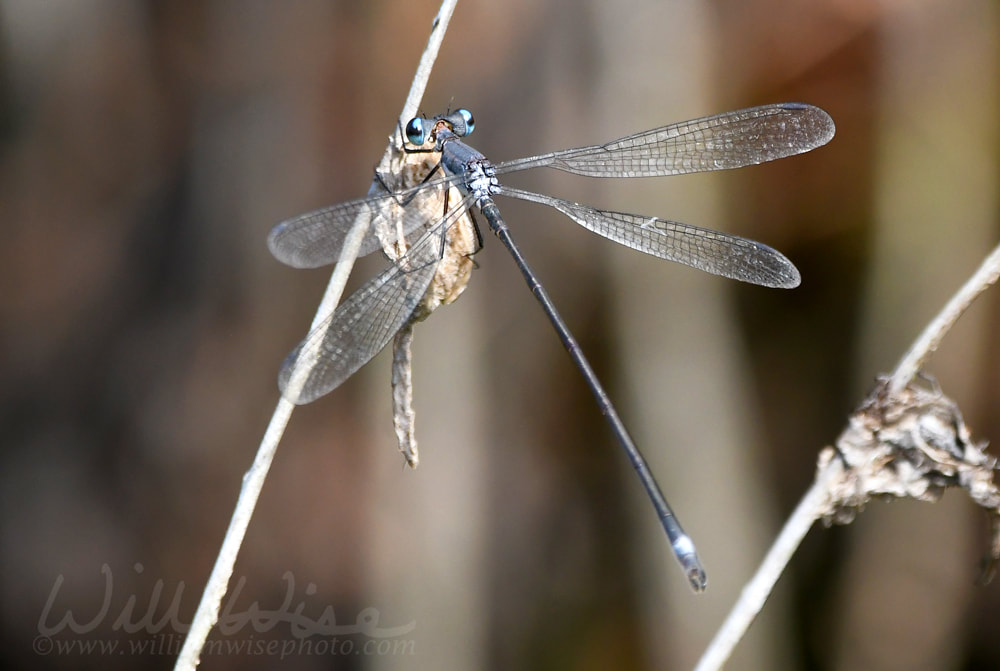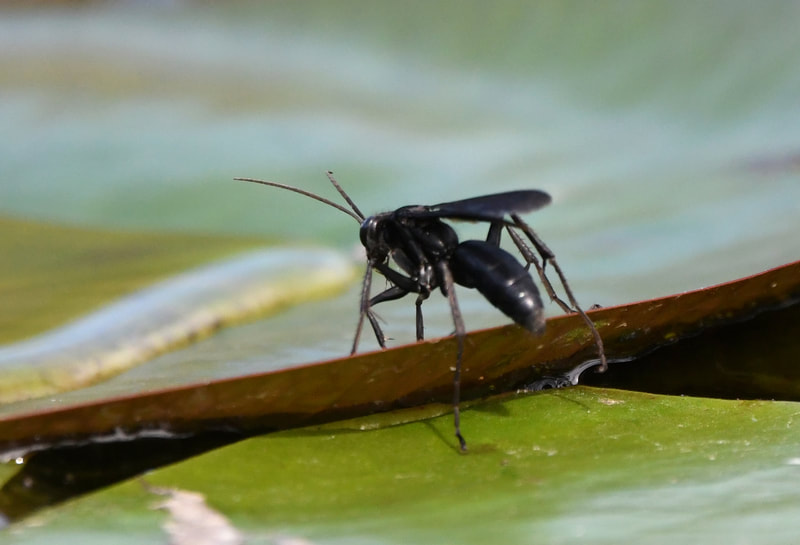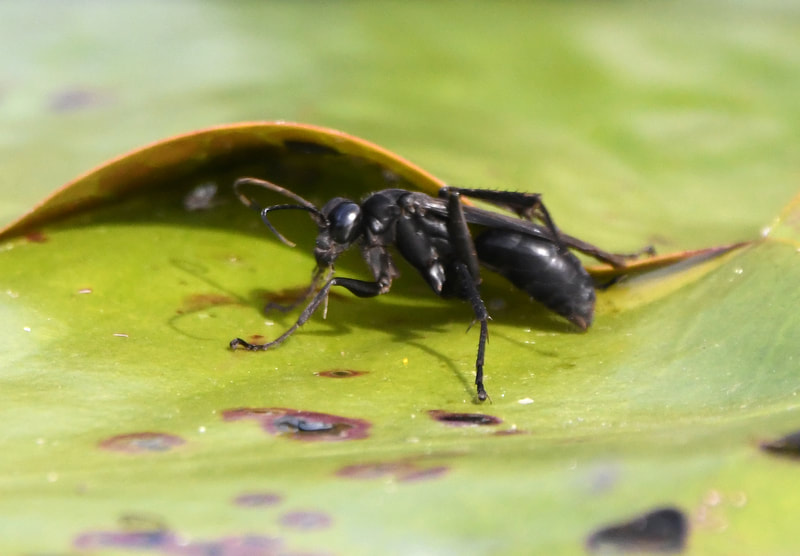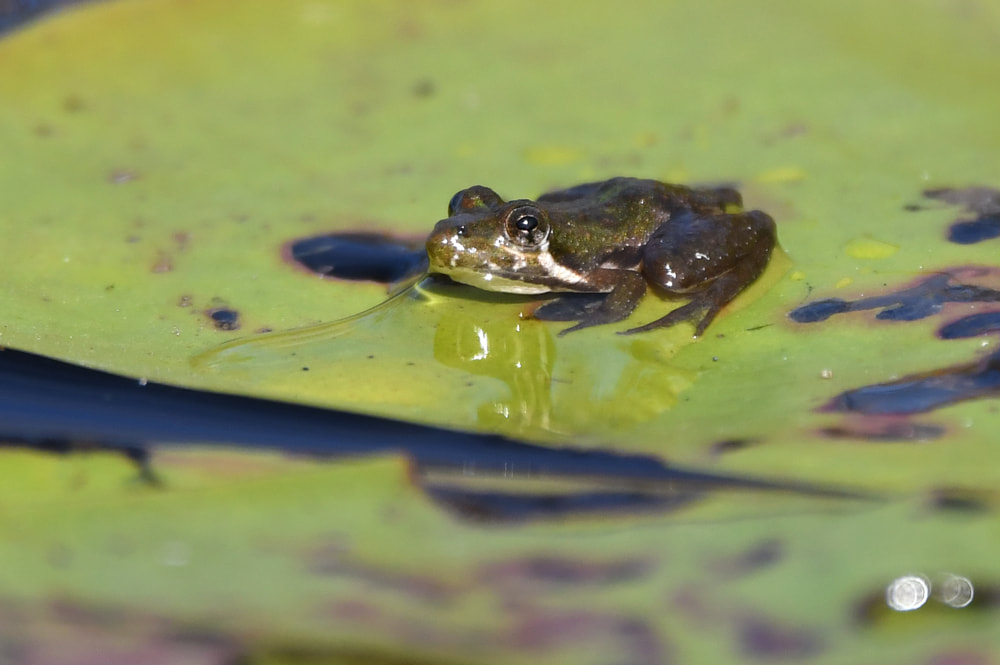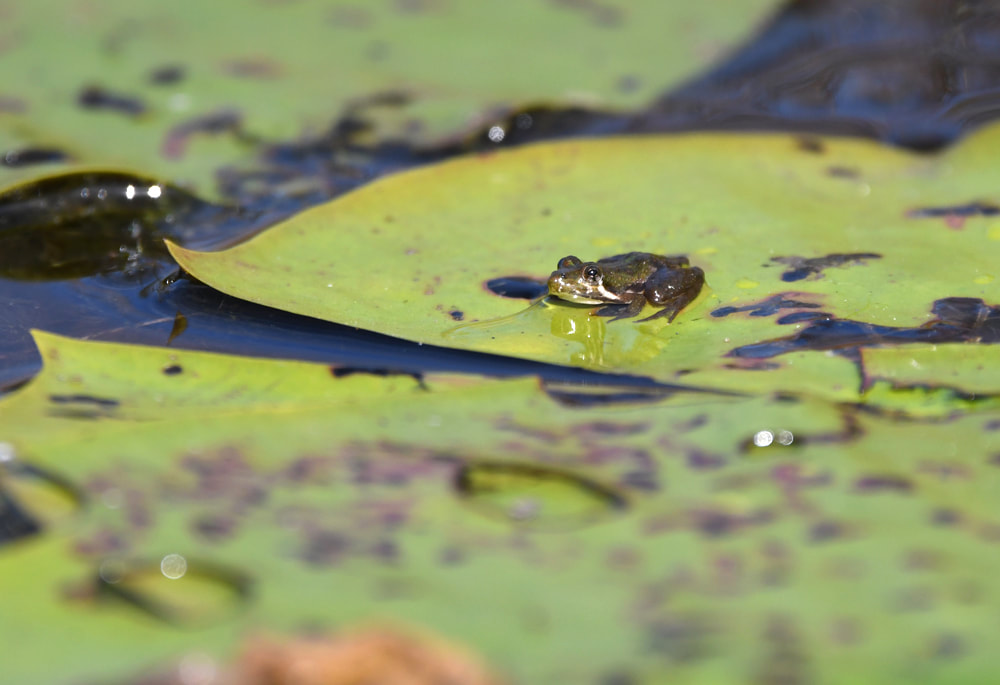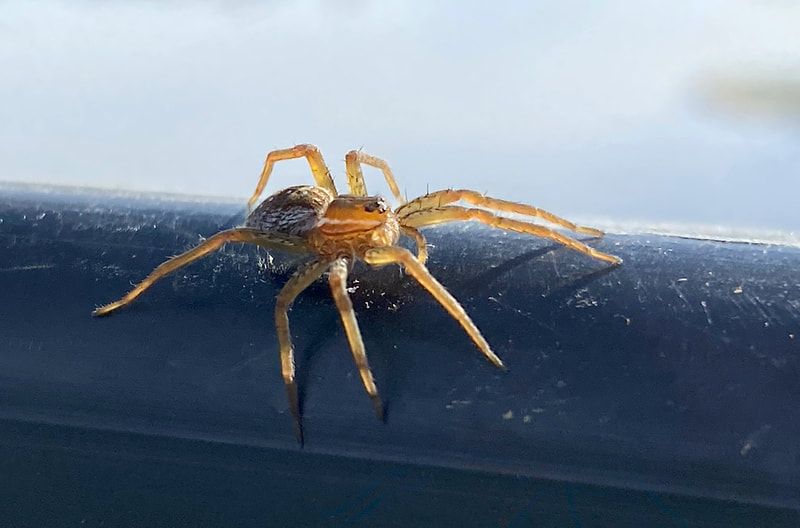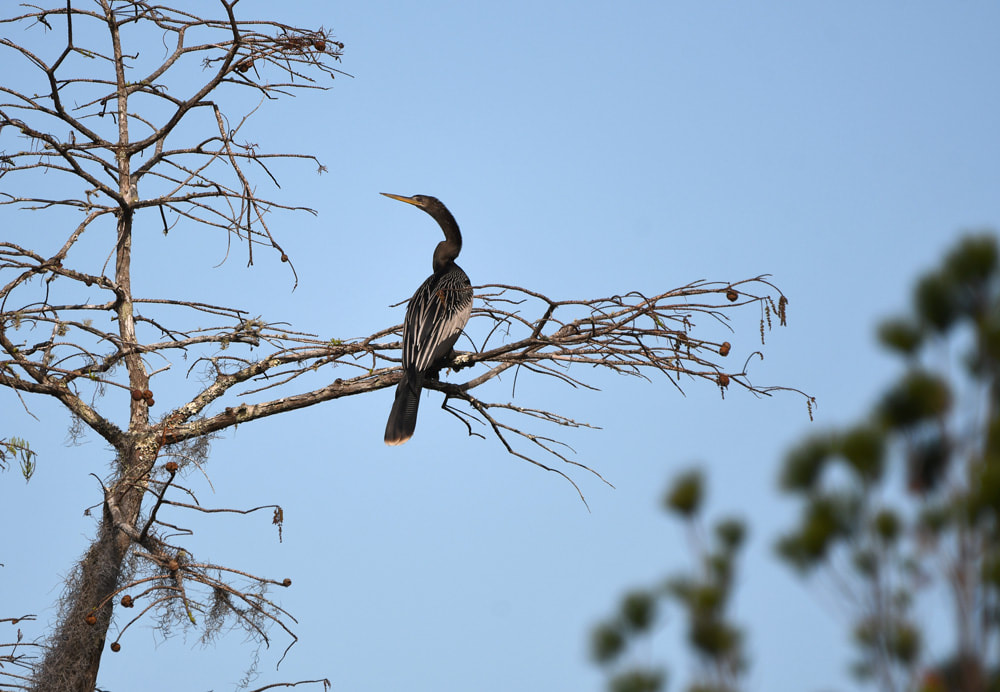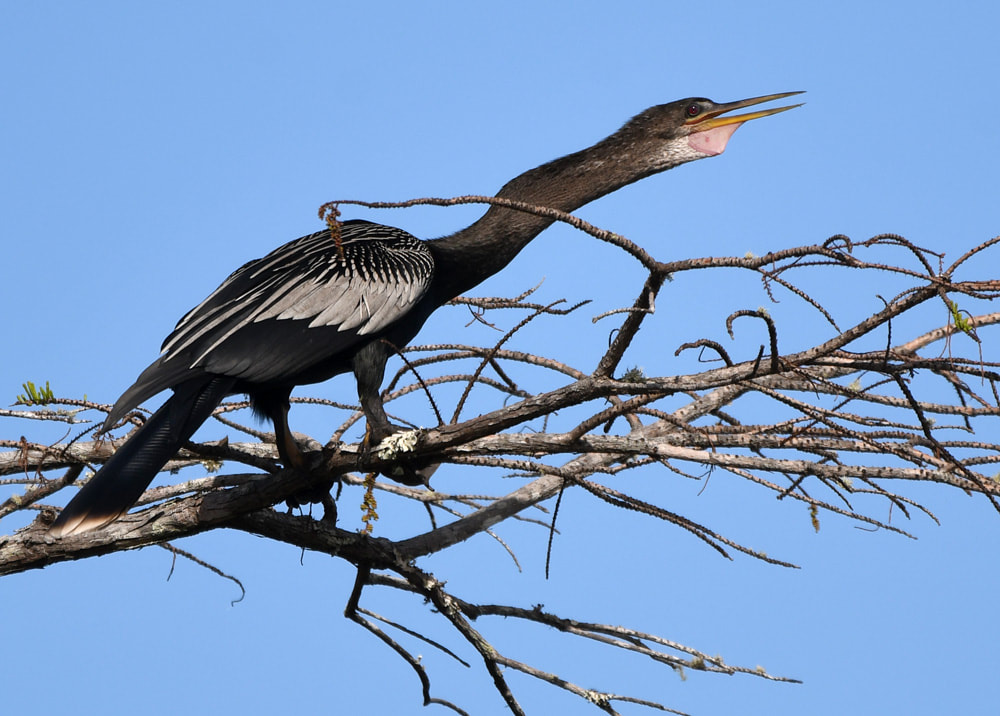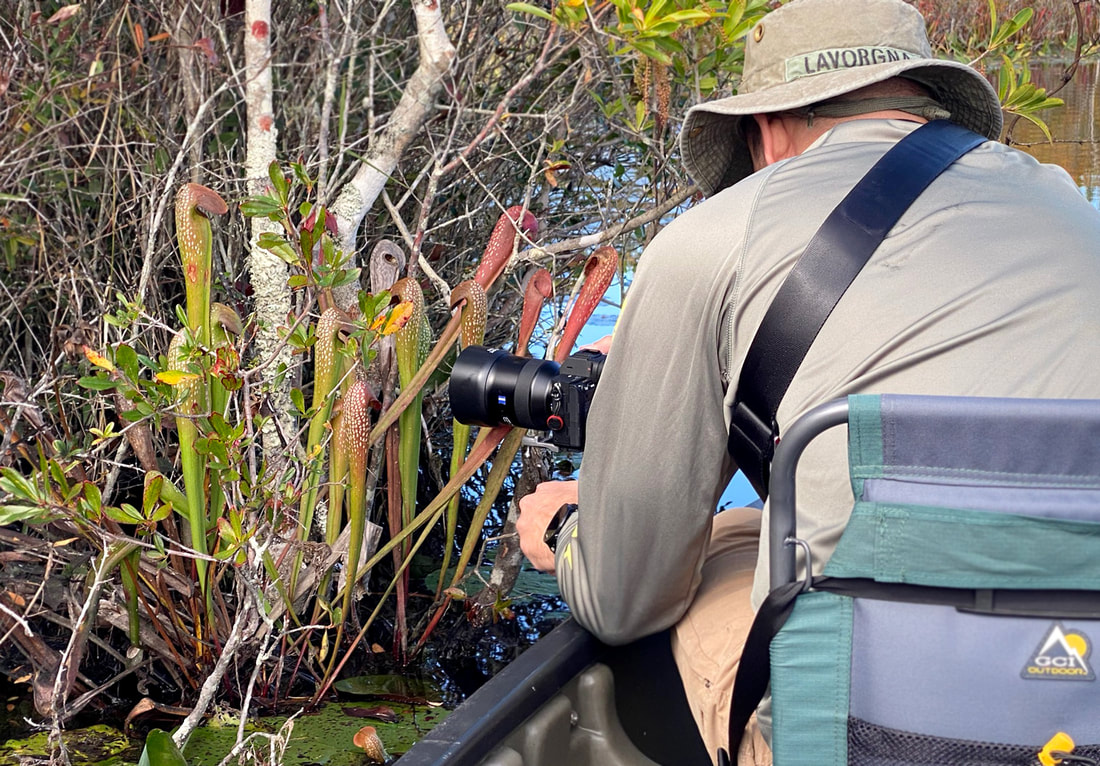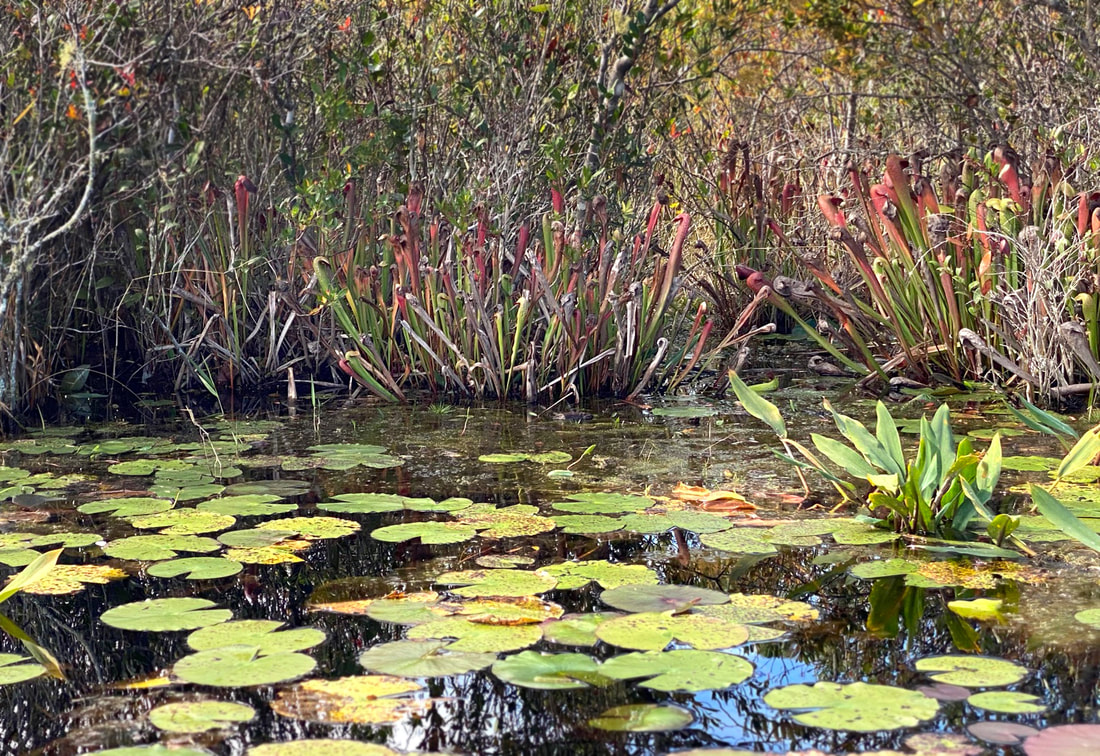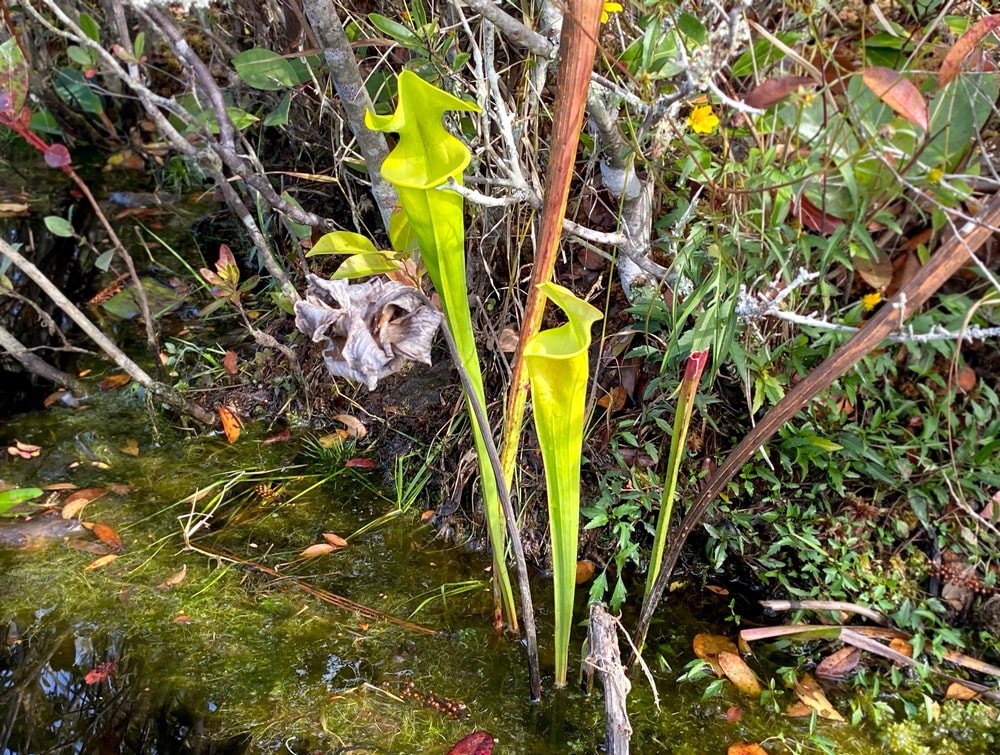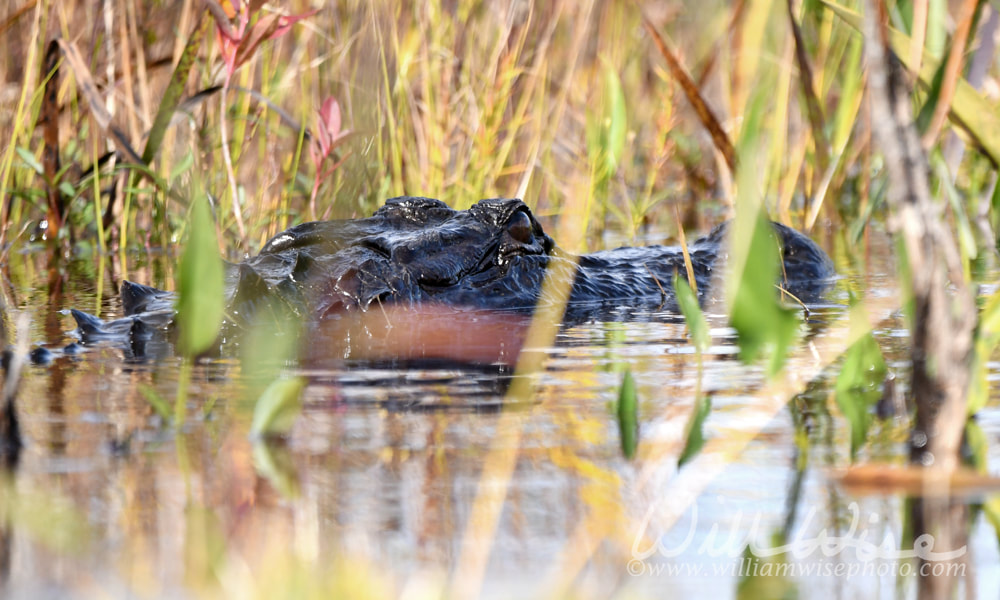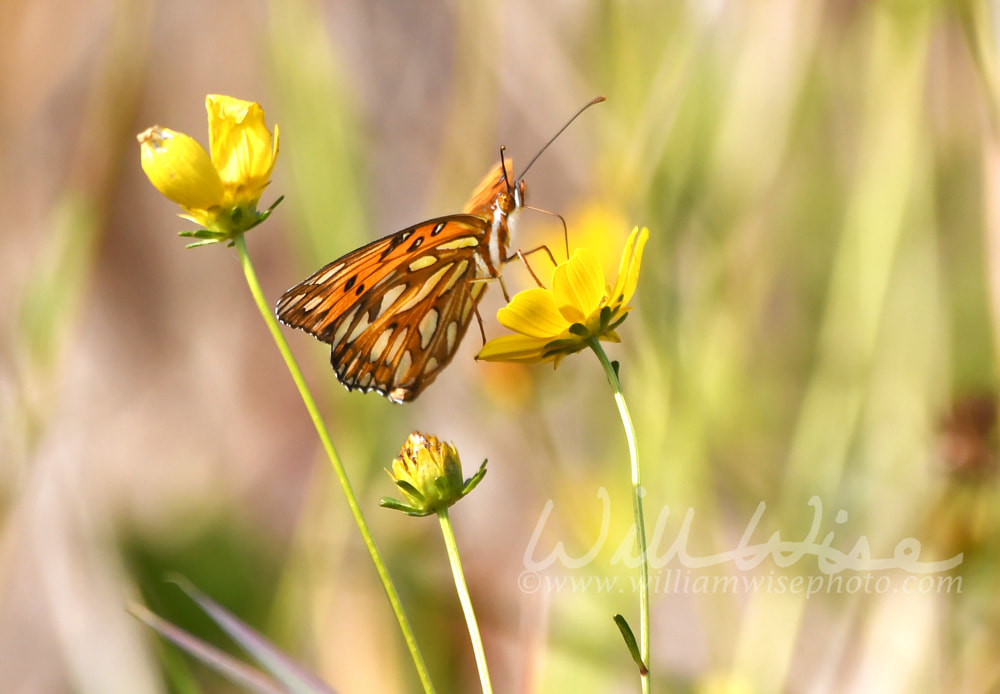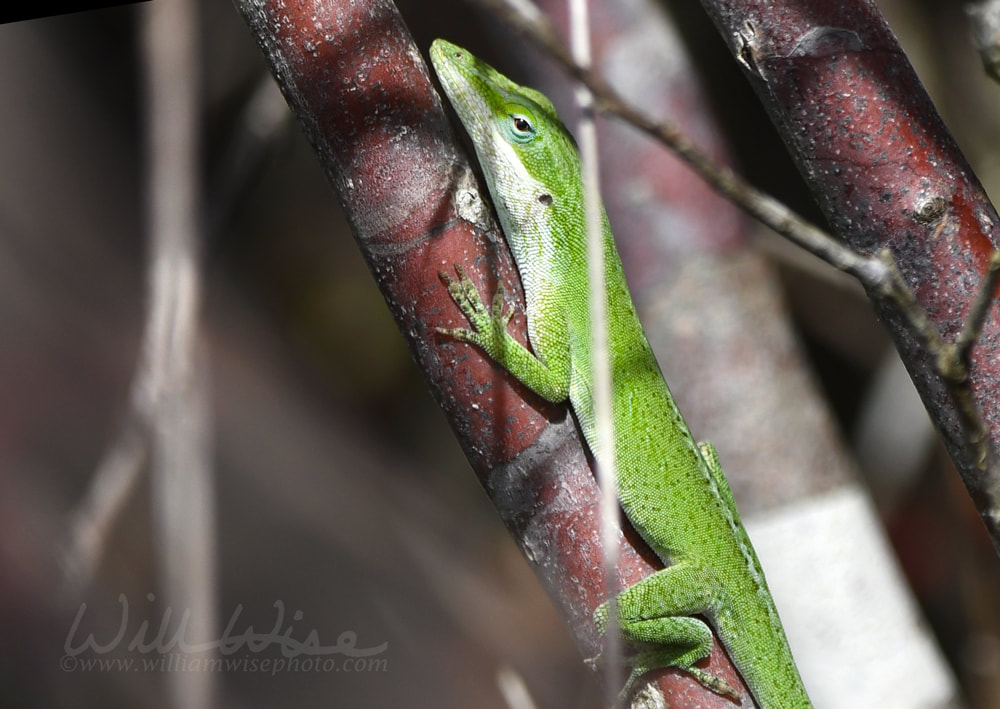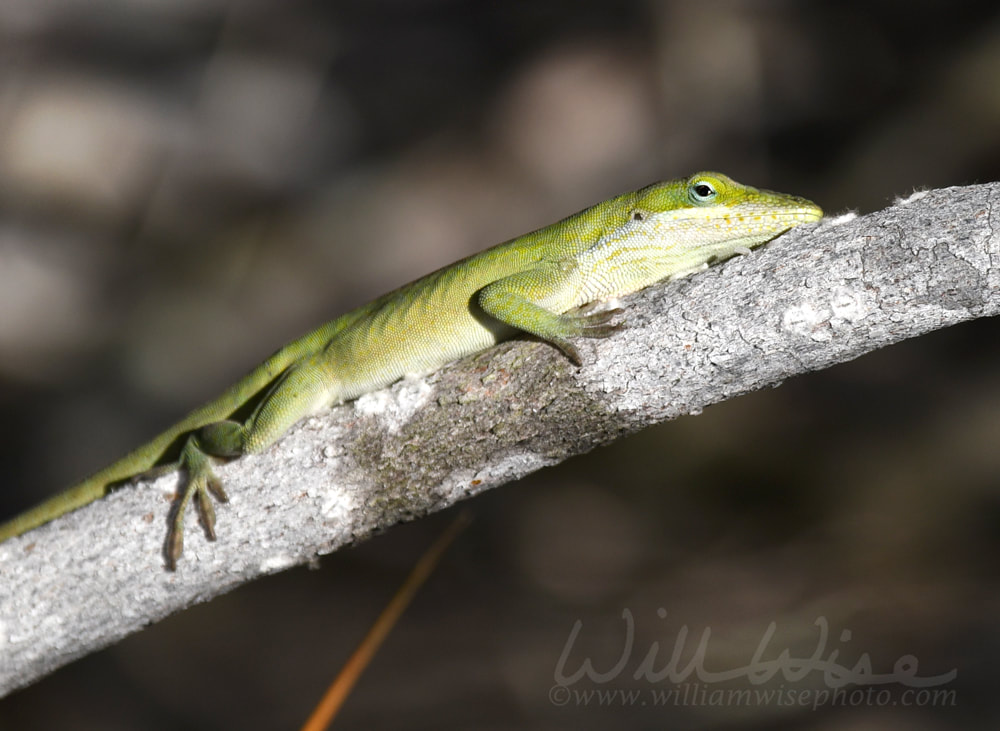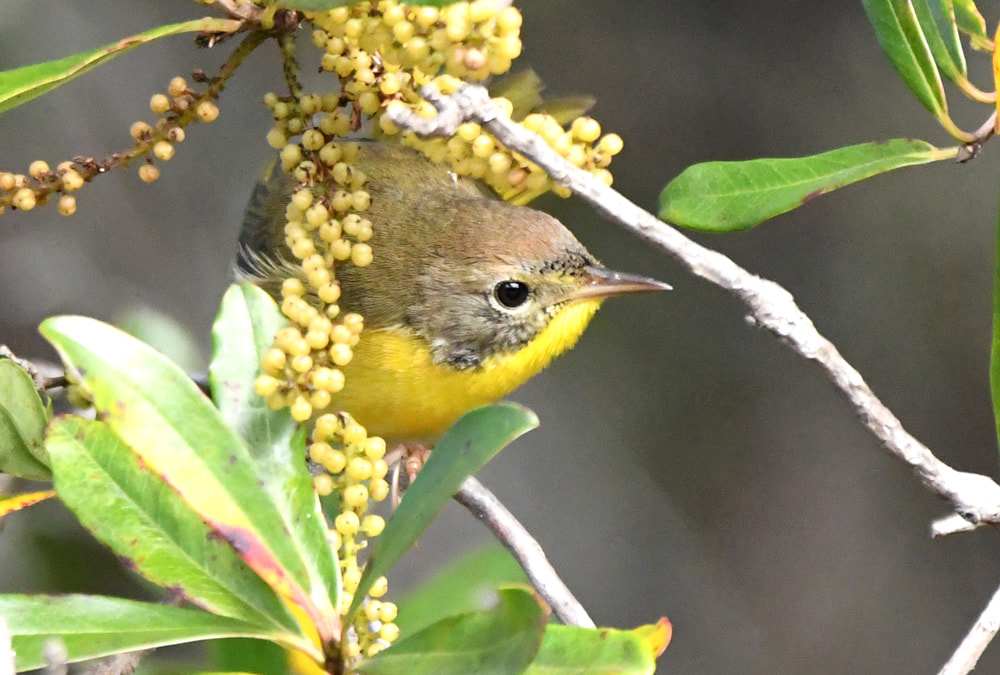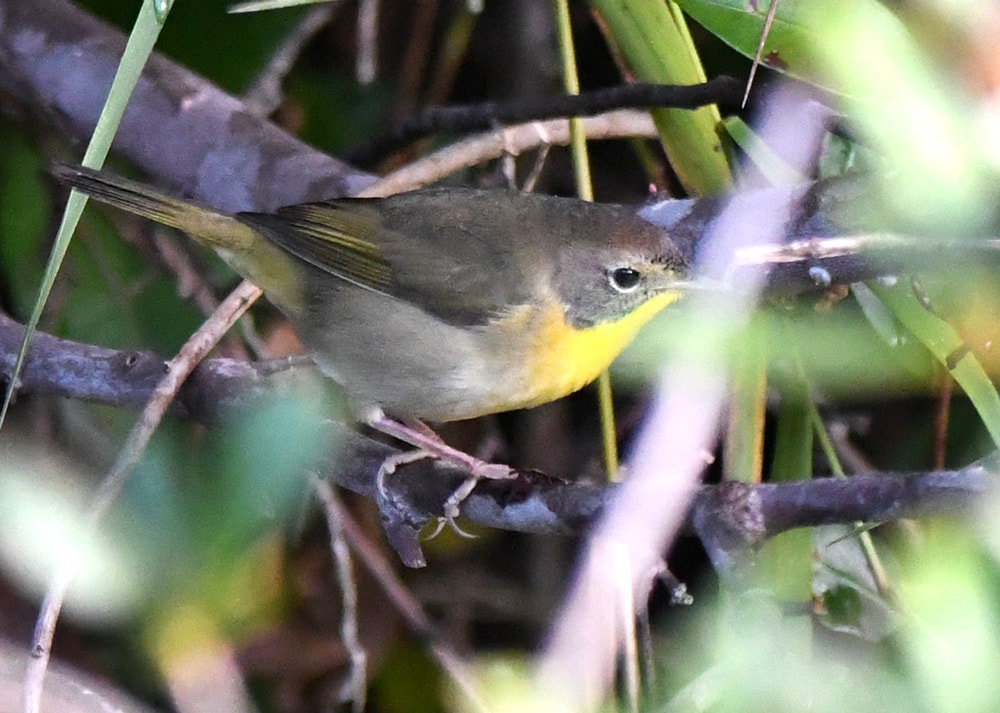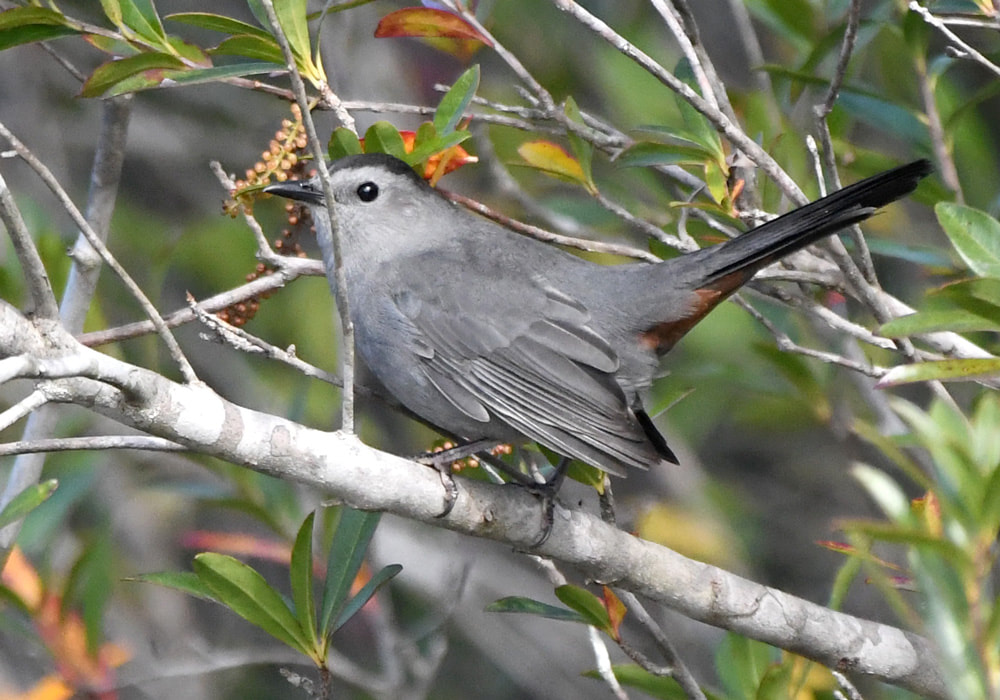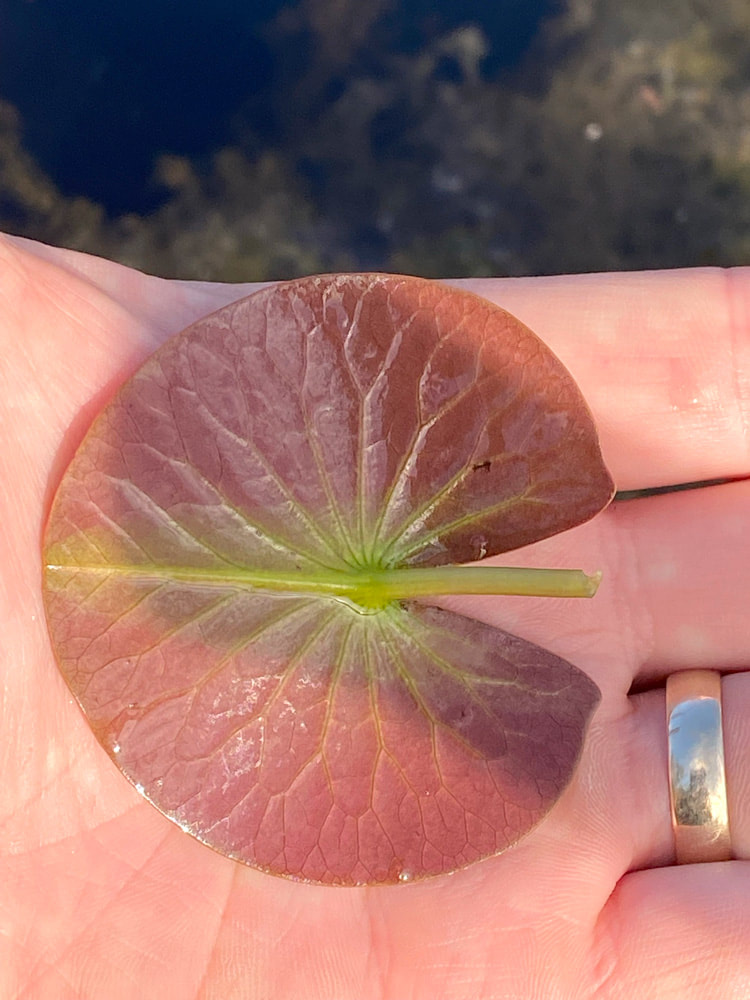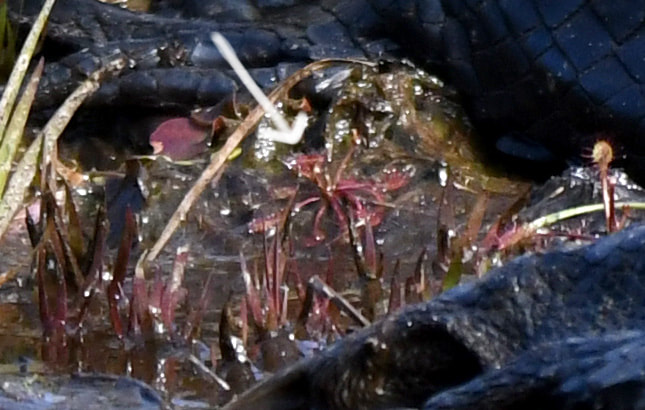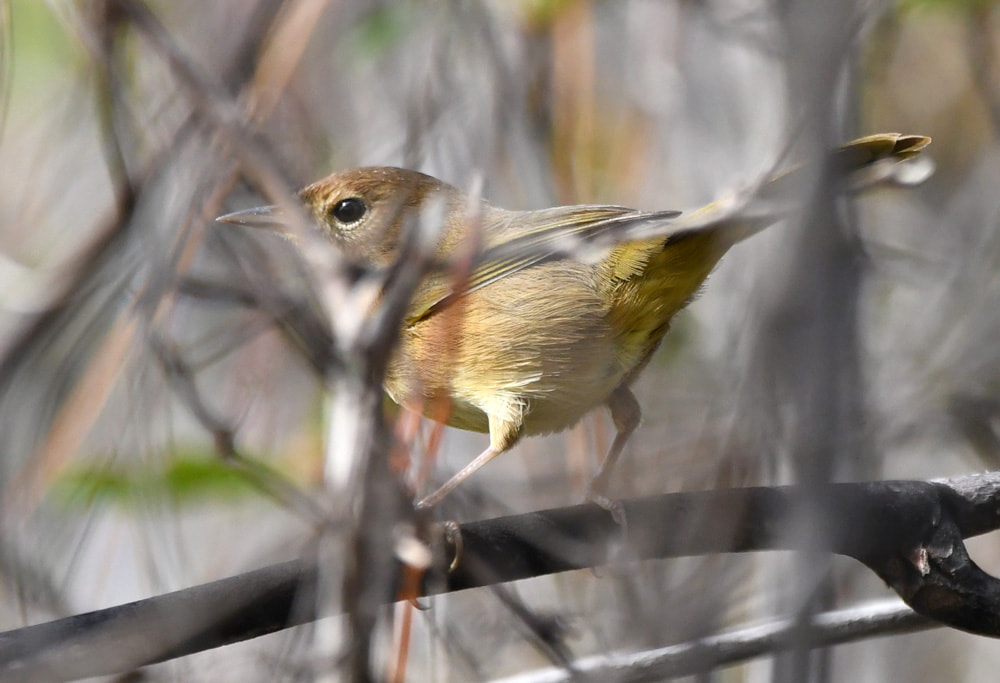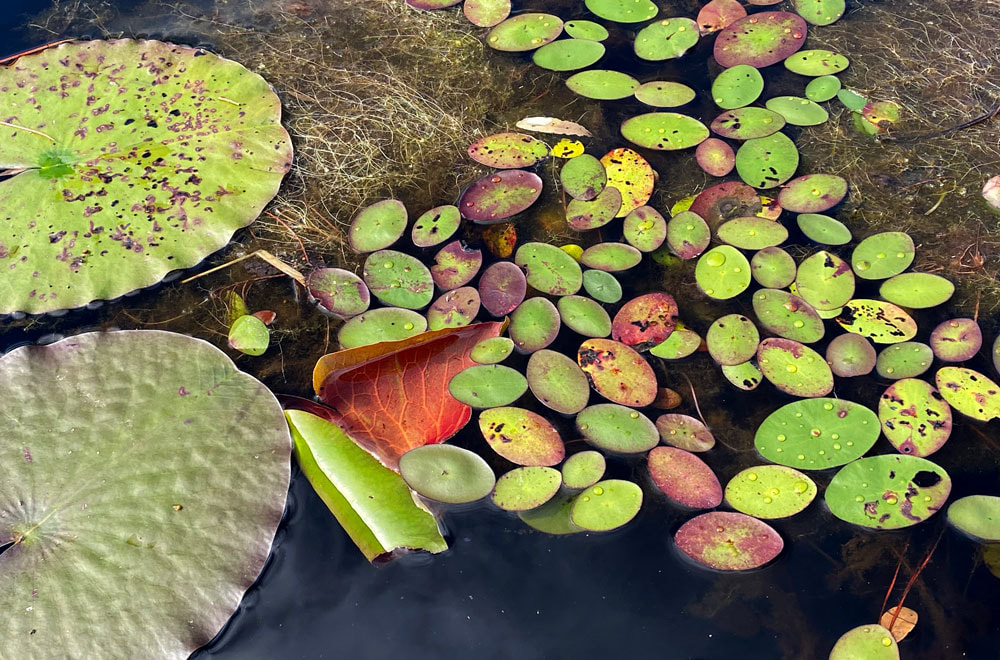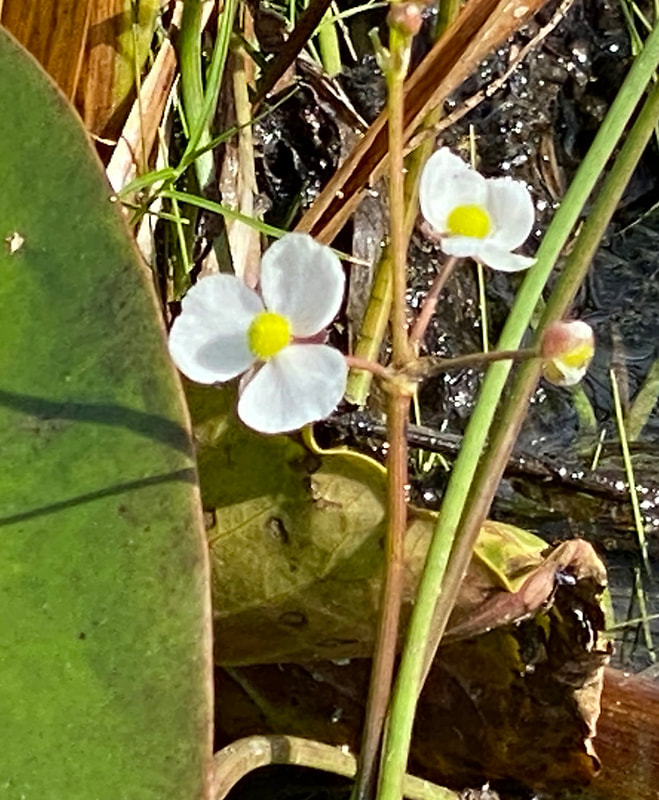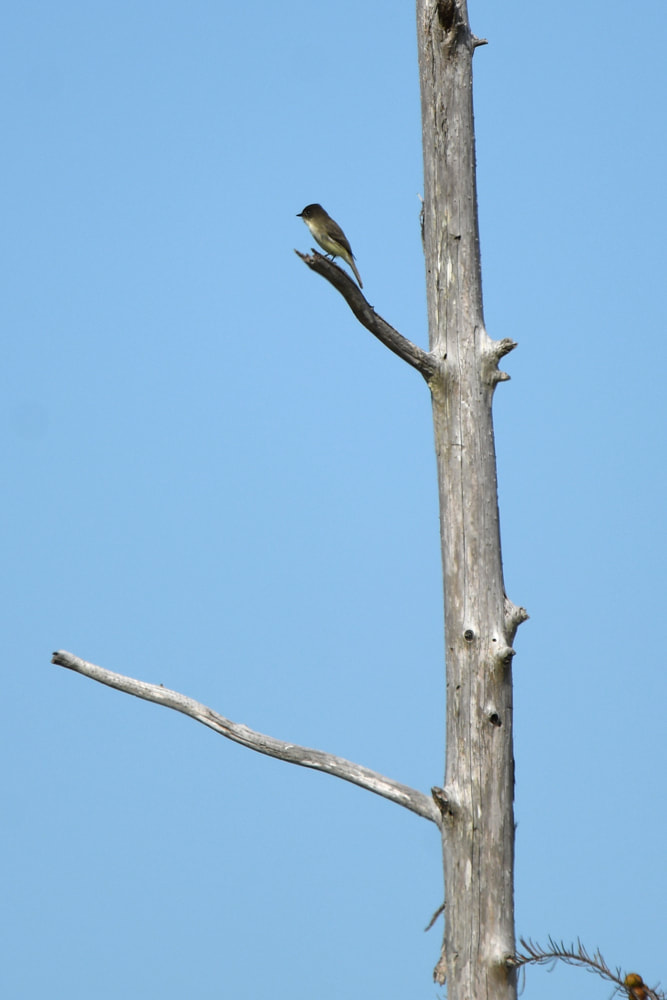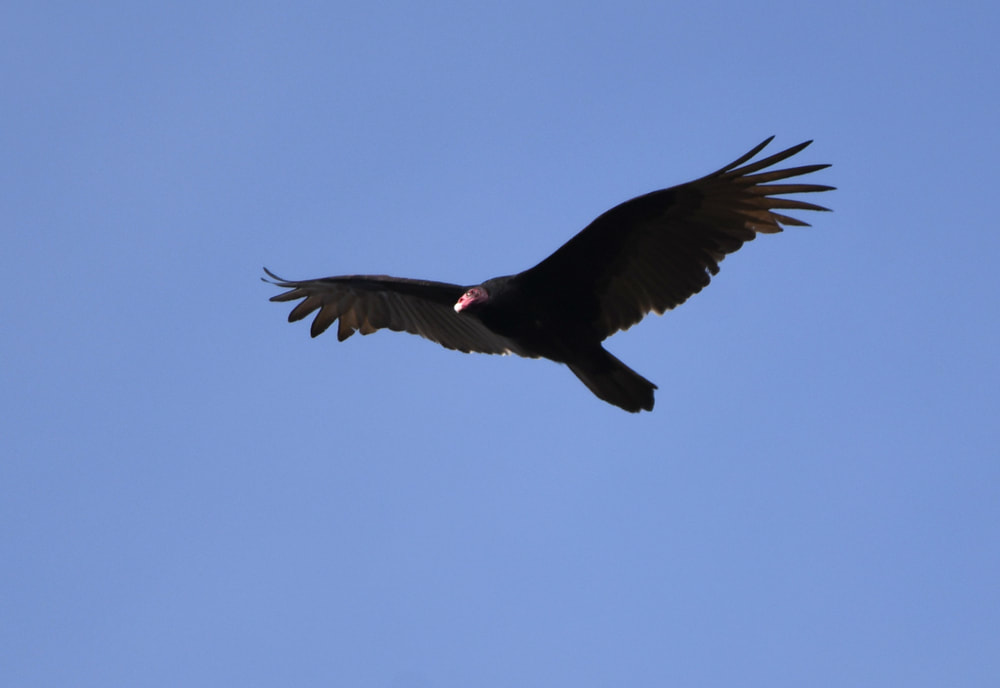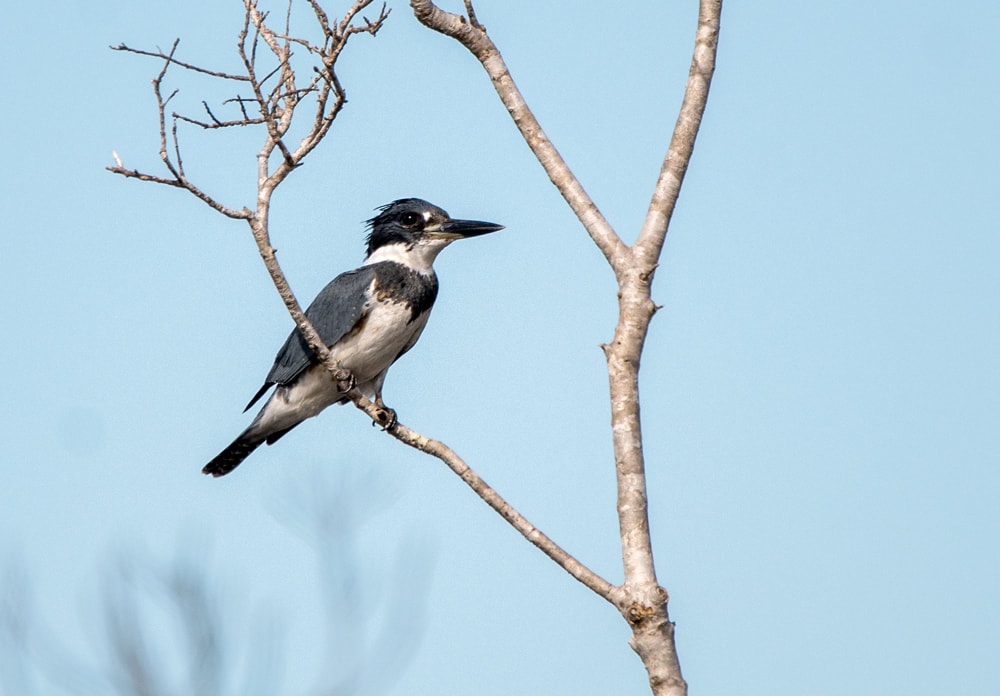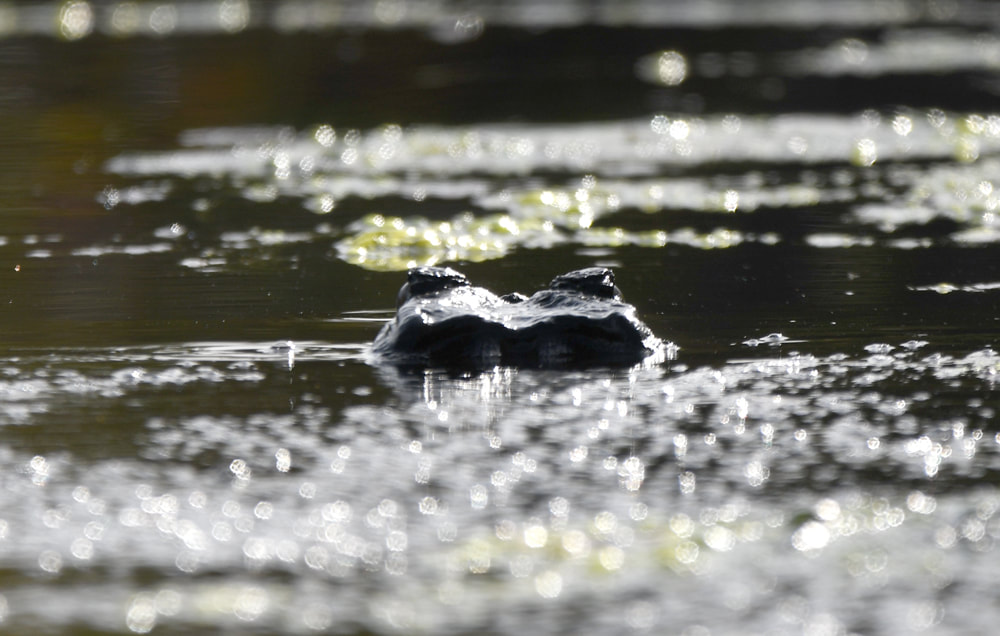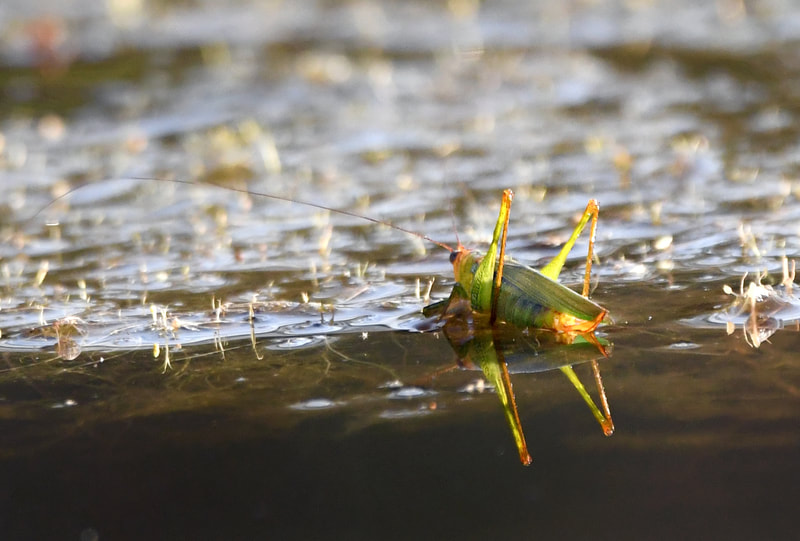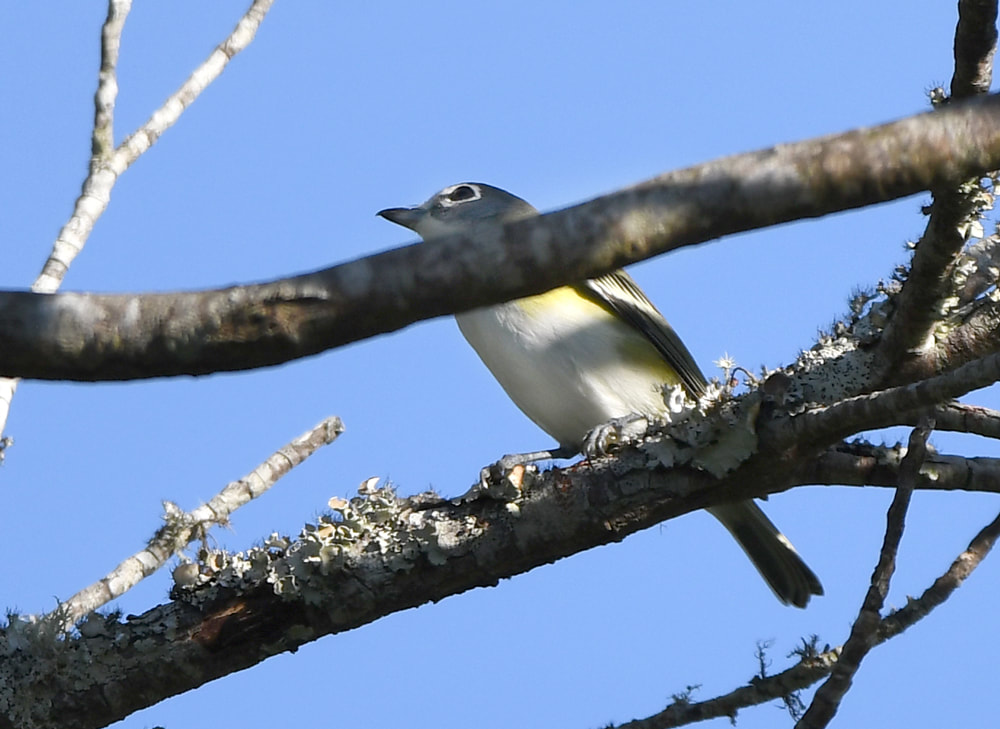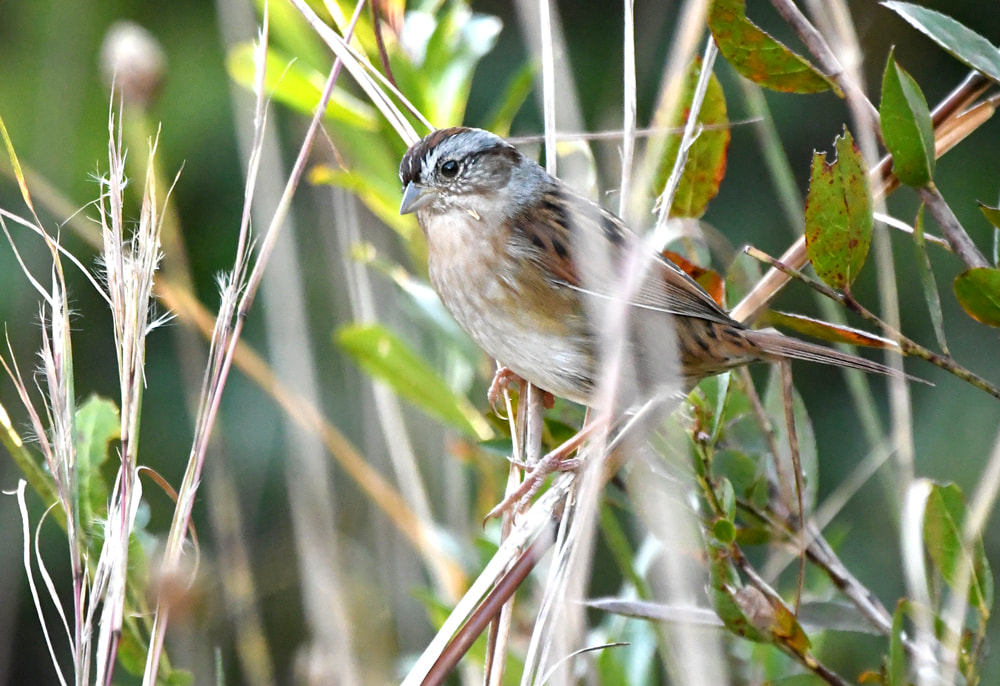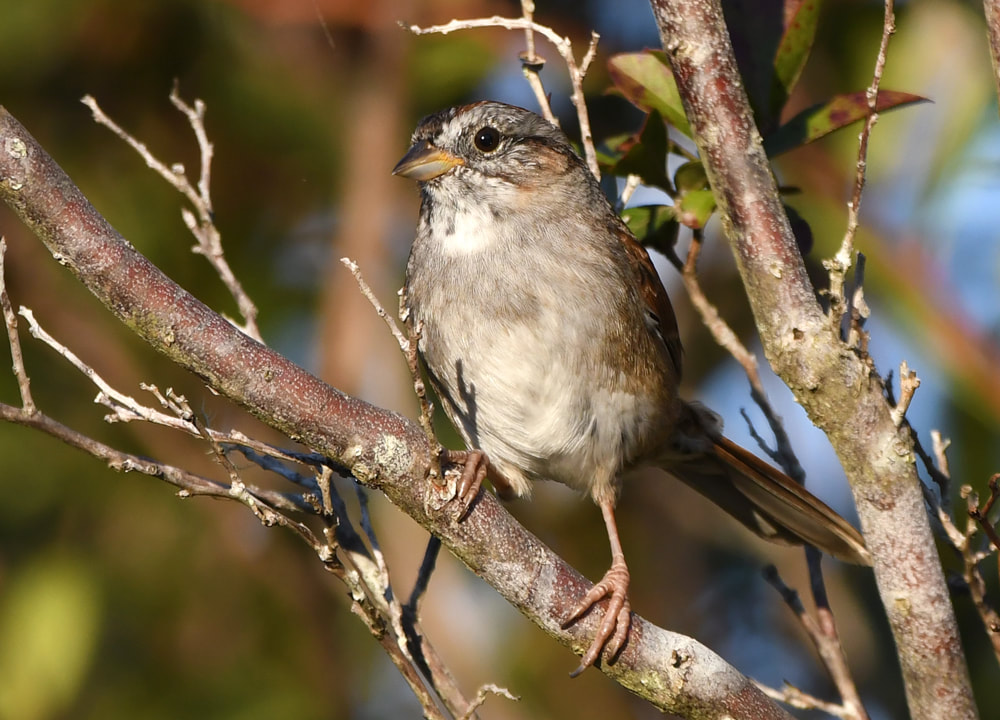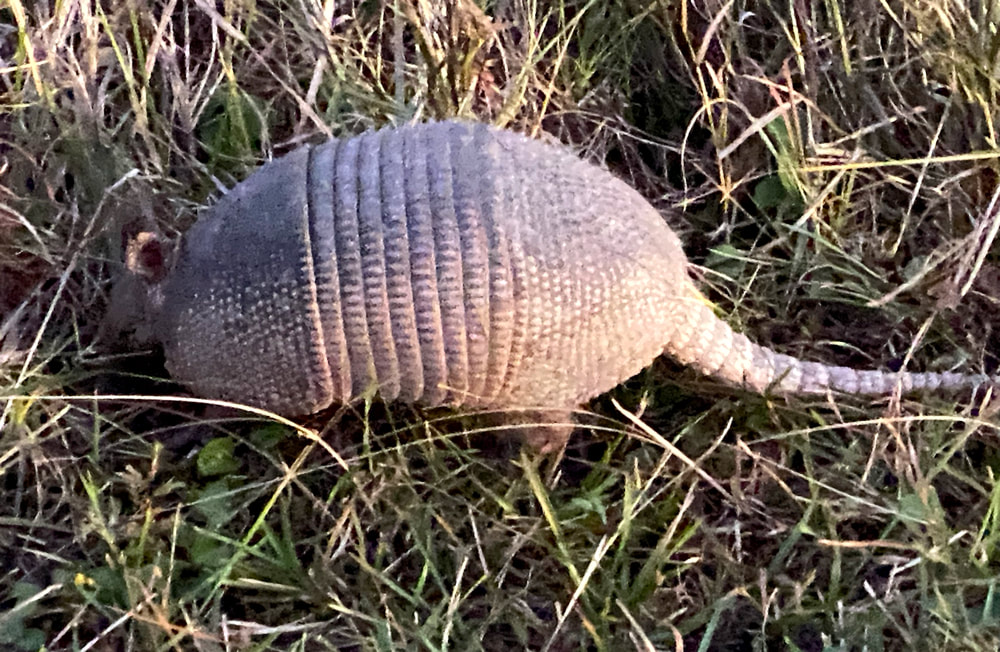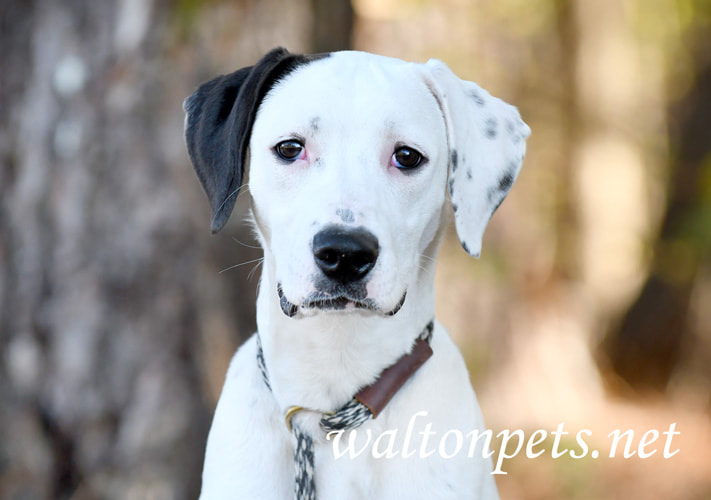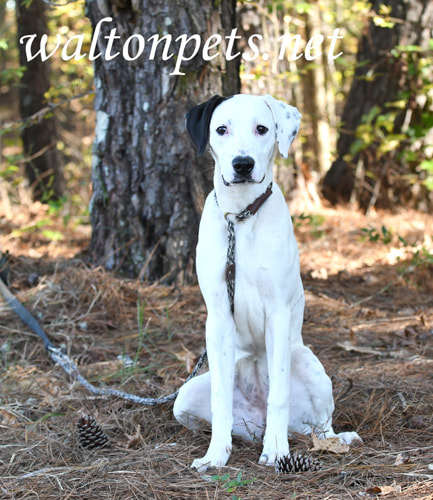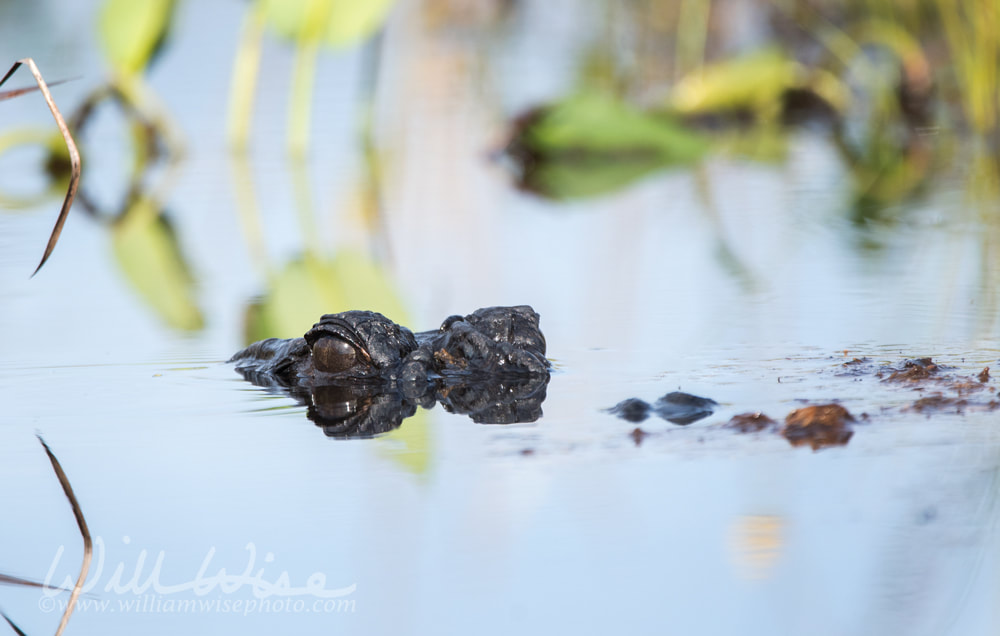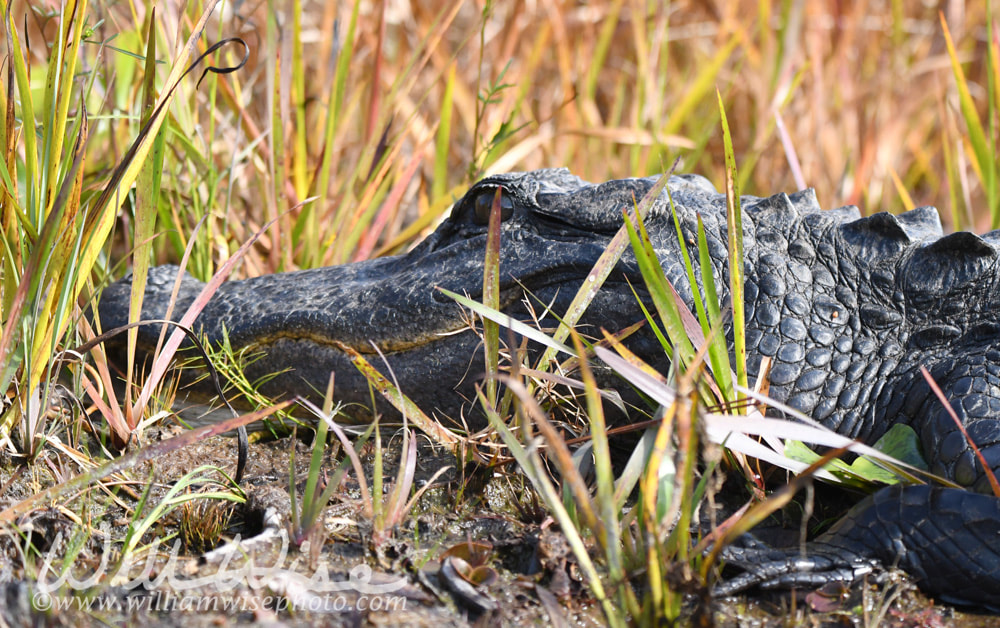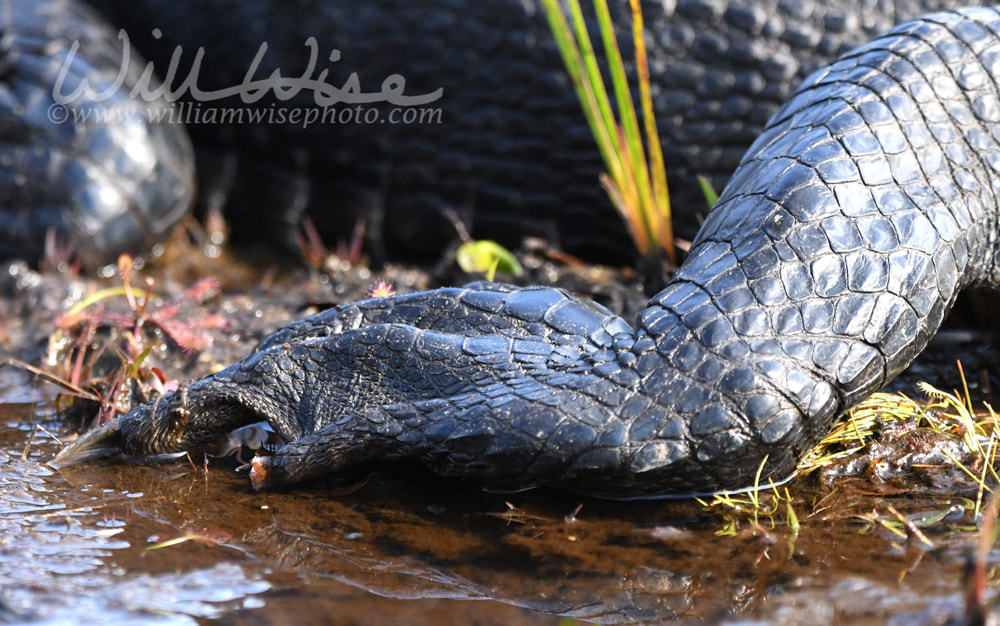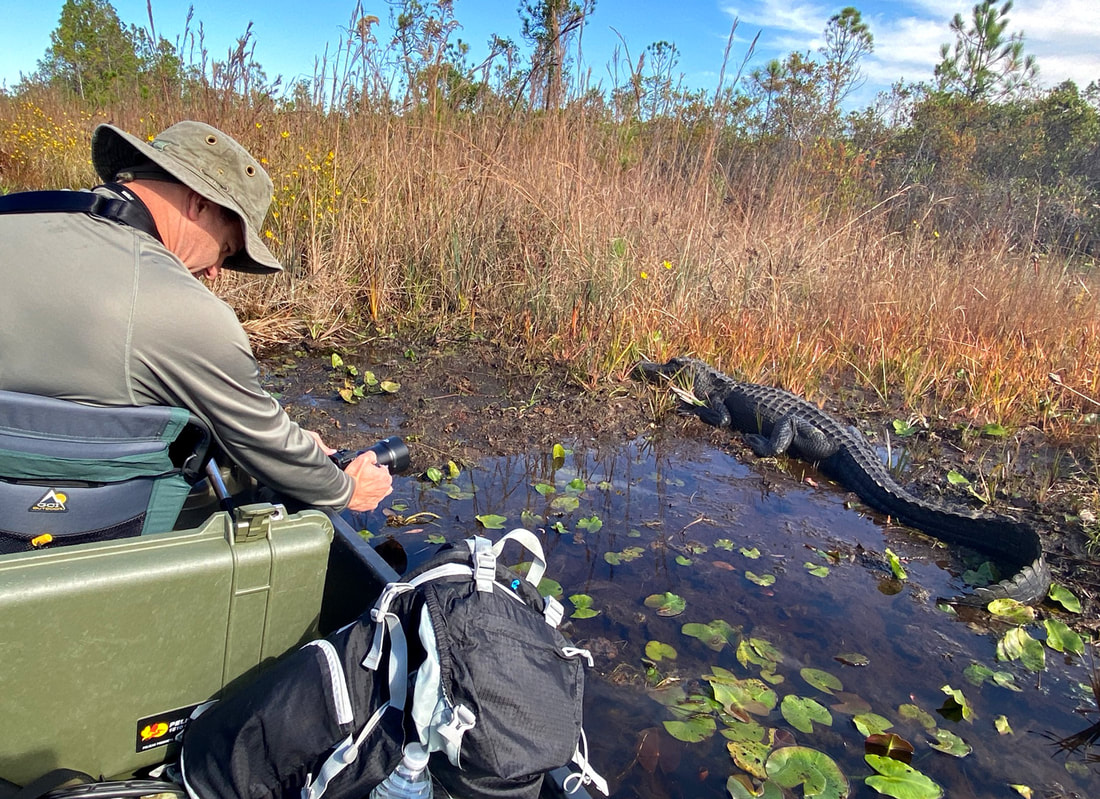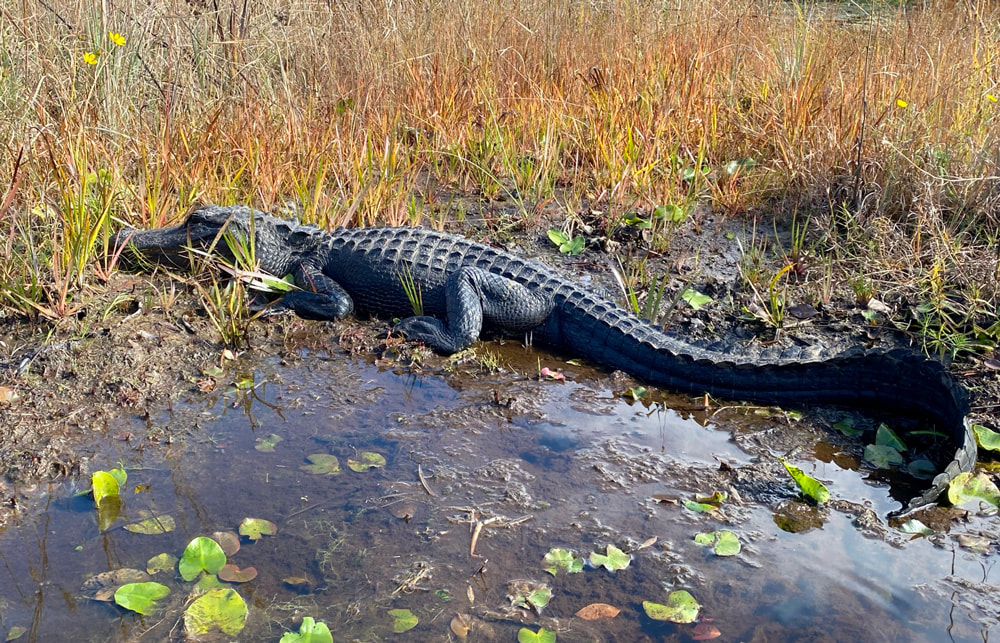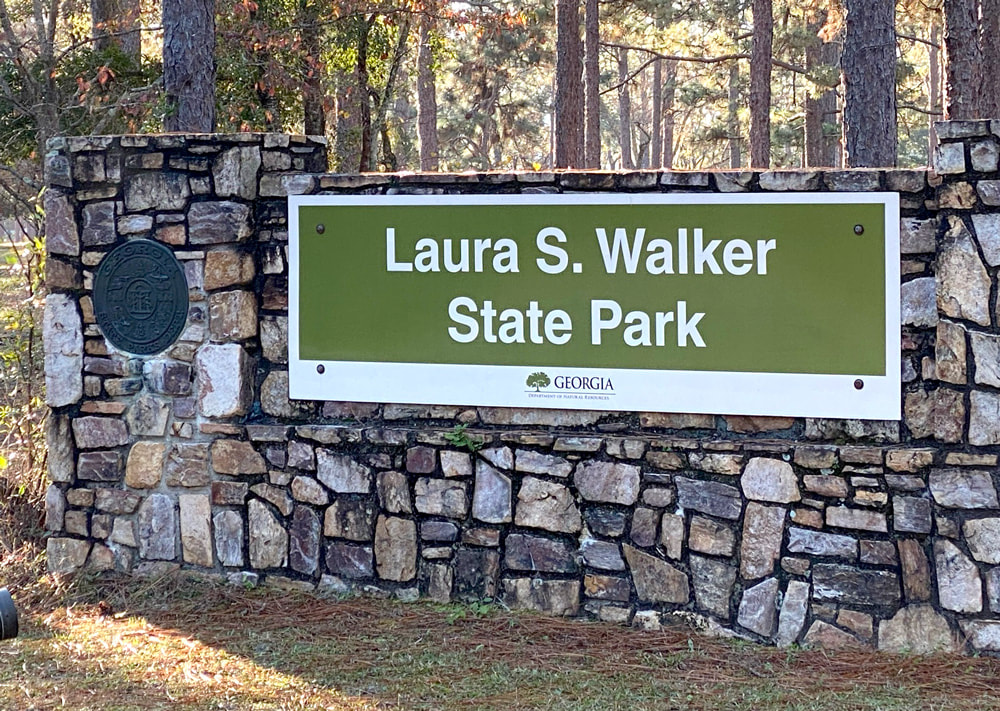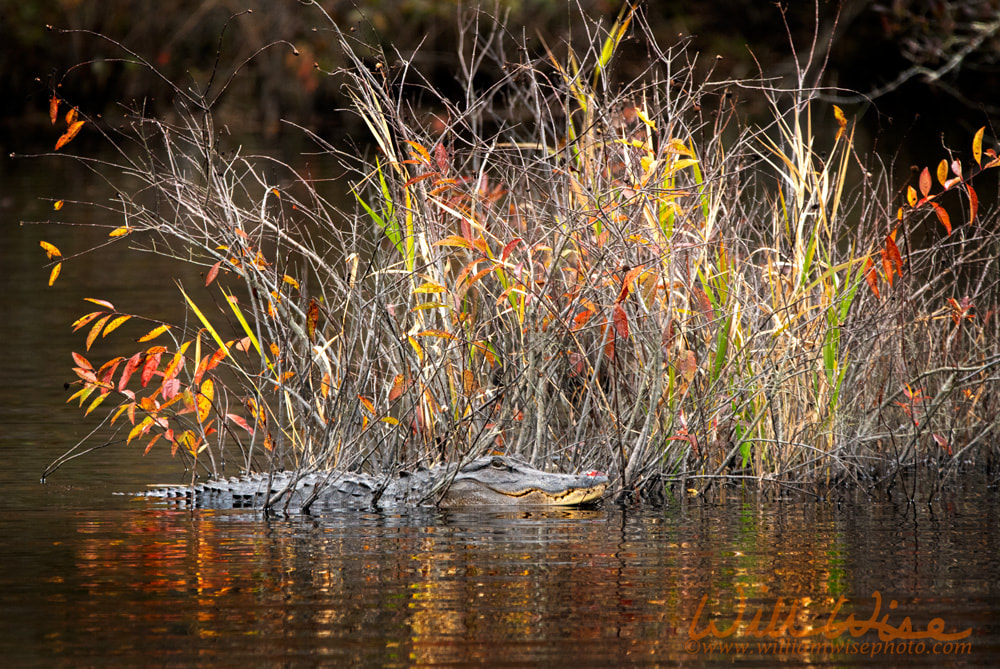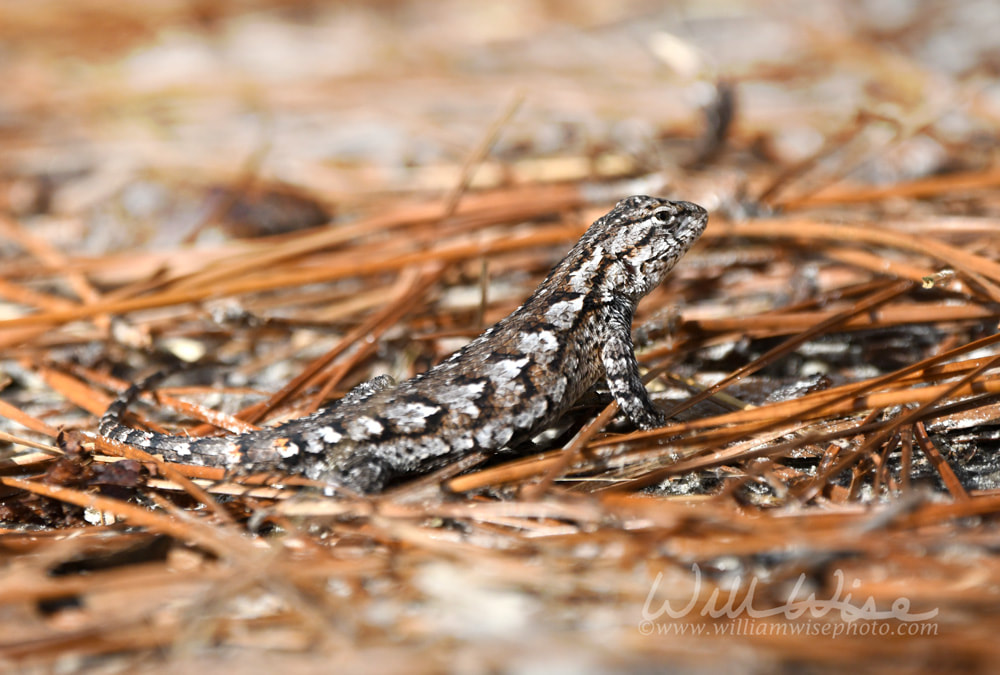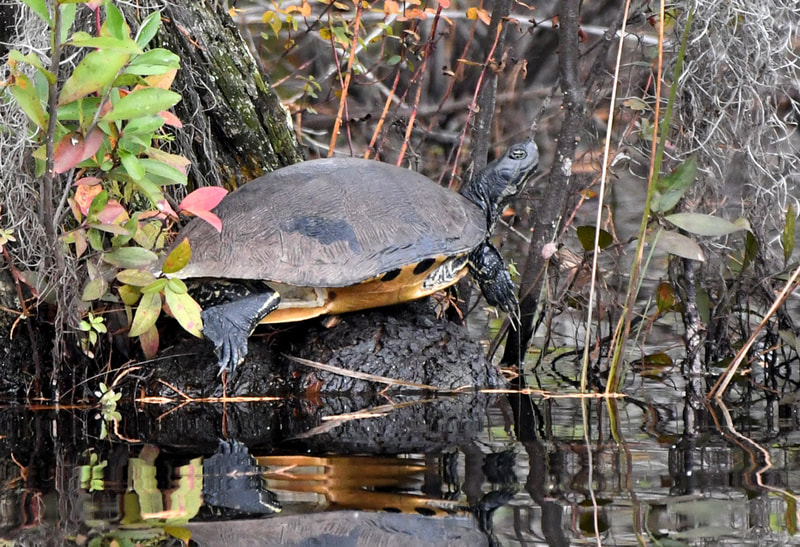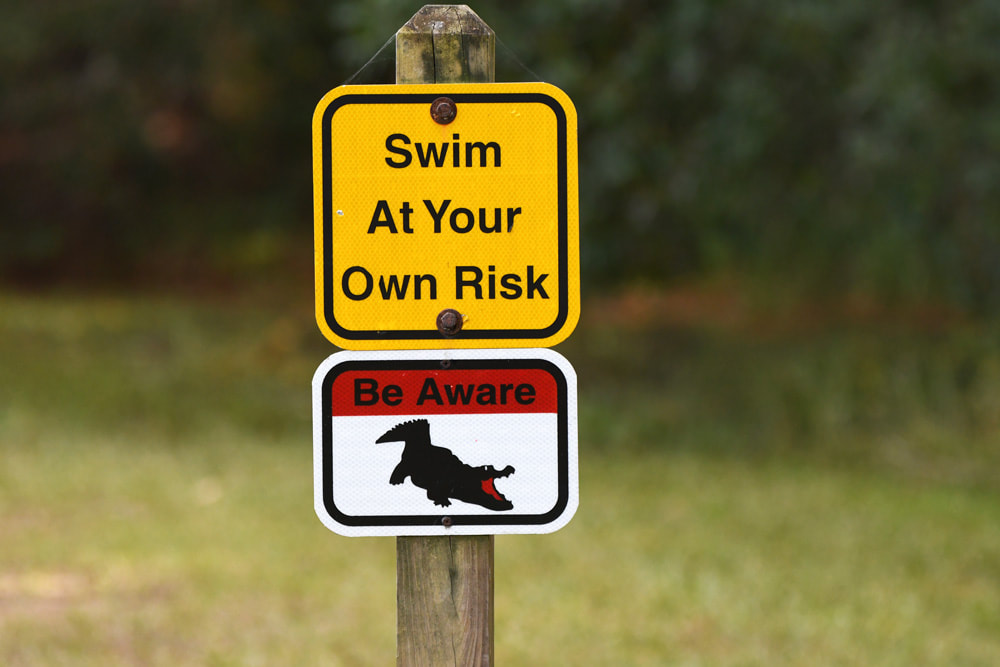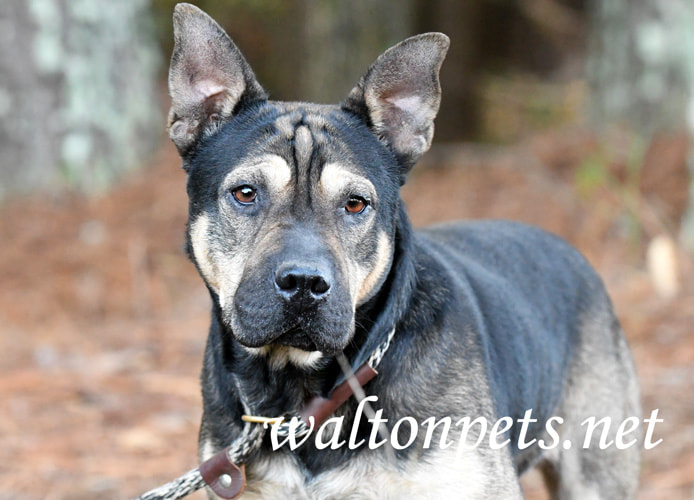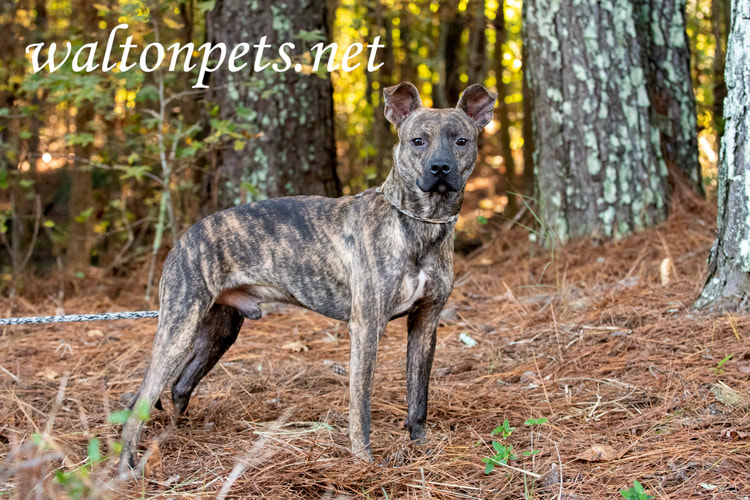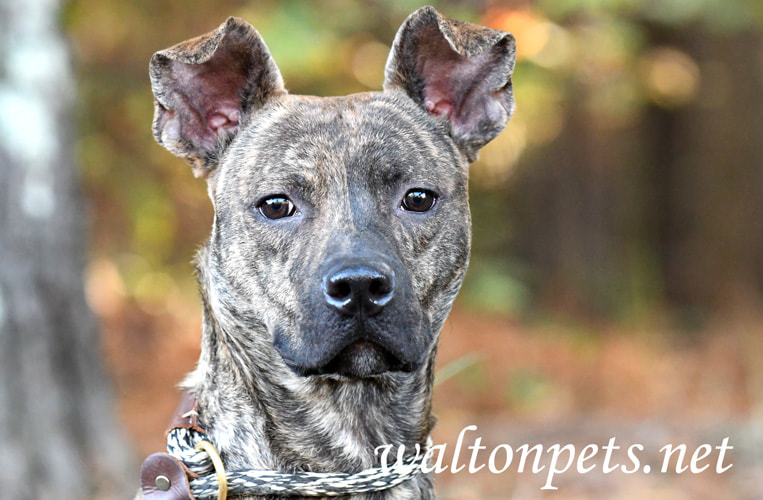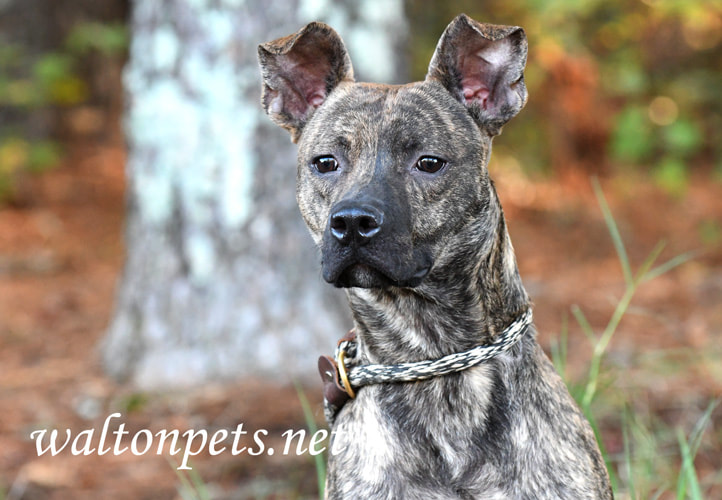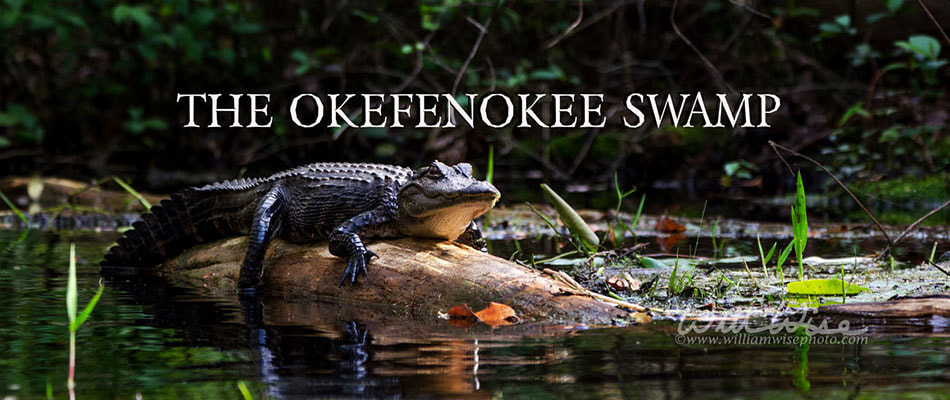 Okefenokee Photography by William Wise. A nature photo journal exploration of Georgia's Okefenokee Swamp, the Land of Trembling Earth, one of the largest blackwater swamps in North America. The alligators, birds, snakes and wildlife of Okefenokee National Wildlife Refuge and Stephen C Foster State Park. -- "What a wildly wonderful world, God! You made it all, with Wisdom at Your side, made earth overflow with your wonderful creations." Psalms 104 The Message My November trip to the Okefenokee centered around the photography workshop hosted at the Suwannee Canal entrance on the east side of the swamp. Photographer John Reed teaches several workshops in the Okefenokee throughout the year.
Leaving the classroom after an early morning meet-and-greet, we made several stops along Swamp Island Drive, and then all walked together along the Chesser Island Boardwalk. Mr. Reed took the time to provide tips to each of the participants. The best part was the comradery of like-minded photographers within the setting of the wonderful Okefenokee Swamp. Set an unbeatable price point, I’d certainly recommend the classes to any photographer of any level. Unless plans change, there should be another class this March. Plan to attend!
0 Comments
 Okefenokee Photography by William Wise. A nature photo journal exploration of Georgia's Okefenokee Swamp, the Land of Trembling Earth, one of the largest blackwater swamps in North America. The alligators, birds, snakes and wildlife of Okefenokee National Wildlife Refuge and Stephen C Foster State Park. -- "What a wildly wonderful world, God! You made it all, with Wisdom at Your side, made earth overflow with your wonderful creations." Psalms 104 The Message A slow stroll along the Chesser Island visitor center and boardwalk trail in the Okefenokee National Wildlife Refuge for some iNaturalist and eBird observations. A collection of photos from Saturday and Sunday, November 13 and 14, 2021. Chesser Island Boardwalk; Okefenokee National Wildlife Refuge, Georgia.  Okefenokee Photography by William Wise. A nature photo journal exploration of Georgia's Okefenokee Swamp, the Land of Trembling Earth, one of the largest blackwater swamps in North America. The alligators, birds, snakes and wildlife of Okefenokee National Wildlife Refuge and Stephen C Foster State Park. -- "What a wildly wonderful world, God! You made it all, with Wisdom at Your side, made earth overflow with your wonderful creations." Psalms 104 The Message Reviewing my photographs from a November, 2021 trip to the Okefenokee National Wildlife Refuge, I noticed a large black lump on the back of an alligator. If I had not seen an article on the subject, I would have thought it was a tumor or other growth. But I had read an article from the University of Georgia about the tracking and studying of alligator movements in the Okefenokee National Wildlife Refuge. Researchers from the UGA Marine Extension and Georgia Sea Grant are using satellite tags to track the movements of adult alligators. Their updates can be seen at https://www.facebook.com/UGACoastalEcologyLab. Okefenokee National Wildlife Refuge, Georgia. 
Okefenokee Photography by William Wise. A nature photo journal exploration of Georgia's Okefenokee Swamp, the Land of Trembling Earth, one of the largest blackwater swamps in North America. The alligators, birds, snakes and wildlife of Okefenokee National Wildlife Refuge and Stephen C Foster State Park. -- "What a wildly wonderful world, God! You made it all, with Wisdom at Your side, made earth overflow with your wonderful creations." Psalms 104 The Message
The main entrance to the Okefenokee National Wildlife Refuge is on the eastern side at the Suwannee Canal Recreation Area. There is a small interpretive museum, a great concession stand, and a small gift shop. One of the best features is the guided boat tours. This is perfect for those wanting to get a bit out into the swamp on a day trip, or who may not have a canoe or watercraft of their own.
The boat tours are definitely worth the small fee. The staff always does a great job of pointing out different features of the Okefenokee including the geography, natural history, and the habitats within the refuge. Early morning cruises are probably the best for wildlife viewing, but the sunset cruise shouldn’t be missed! During my November 2021 visit for the photography workshop hosted by the Refuge, I didn’t have time after the class to launch my own canoe, so I took the evening sunset cruise. The guide motored us out to Grand Prairie and parked the boat. It was like watching a Discovery Channel movie at a drive-in iMax theater! The purples and oranges of the skies and lowering sun were so vibrant, while Cypress silhouettes marked the horizon with incredible detail. There was a tangible serenity, like being wrapped in a warm blanket on the somewhat cool evening! Sunset boat tour from the Suwannee Canal Recreation Area; Okefenokee National Wildlife Refuge, Georgia.  Okefenokee Photography by William Wise. A nature photo journal exploration of Georgia's Okefenokee Swamp, the Land of Trembling Earth, one of the largest blackwater swamps in North America. The alligators, birds, snakes and wildlife of Okefenokee National Wildlife Refuge and Stephen C Foster State Park. -- "What a wildly wonderful world, God! You made it all, with Wisdom at Your side, made earth overflow with your wonderful creations." Psalms 104 The Message When visiting the Okefenokee in the fall and winter, there is one swamp inhabitant that can’t be missed: the Yellow-rumped Warbler. It is a bright and cheery bird that is totally absent in the summer, but can be seen everywhere throughout the fall and winter. Groups of twenty or so are constantly flitting around the Titi and Staggerbush, happily chirping and chipping. As I told a fellow photographer, be careful if you pish, you will practically be mobbed by them! According to sources, Setophaga coronata is “a regular North American bird species that can be commonly observed all across the continent.” Individuals and subspecies can vary considerably in appearance, but one thing remains consistent: their yellow rump. This field mark as earned them the affection name "Butter Butts" from birders. The these yellow tails can be seen all through the woody swamp scrub. According to the eBird frequency charts, the Yellow-rumped Warblers begin showing up in the Okefenokee with the fall migration. They then hang around in great abundance until, on a sudden, they disappear from the swamp by May. As sources state, “Every year, fall migration usually takes place from September to November, spring migration from April to May, and the species known to depart from its winter habitats from March to April.” It amazes me how a bird can be totally absent on one trip, and then practically everywhere just a few months later. Paddling between Kingfisher Landing and Double Lakes; Okefenokee Swamp National Wildlife Refuge, Georgia.  Okefenokee Photography by William Wise. A nature photo journal exploration of Georgia's Okefenokee Swamp, the Land of Trembling Earth, one of the largest blackwater swamps in North America. The alligators, birds, snakes and wildlife of Okefenokee National Wildlife Refuge and Stephen C Foster State Park. -- "What a wildly wonderful world, God! You made it all, with Wisdom at Your side, made earth overflow with your wonderful creations." Psalms 104 The Message The Okefenokee Swamp features a variety of habitats within one giant ecosystem. As one paddles, the dark canoe trails through the cypress trees fall off to reveal wide-open, sweeping swamp prairie landscapes. There is never a lack of panoramas for the landscape photographer. But there are areas of the swamp where the runs constrict and the scrubby vegetation of Titi and Fetterbush not only impede passage, but impede the view. While paddling the red trail north of Kingfisher Landing in November 2021, I could only get a view of Double Lakes by standing in my canoe… a tricky position for a photographer! But when the walls close in around you, that doesn’t mean the photography opportunities disappear. If your senses remain alert to the natural world around you, one simply redirects focus and explores the details of some of the smaller plants and critters within the National Wildlife Refuge. If the open views are blocked, its time to switch to a macro lens and explore the smaller, hidden world of the Okefenokee! Paddling between Kingfisher Landing and Double Lakes; Okefenokee Swamp National Wildlife Refuge, Georgia.  Okefenokee Photography by William Wise. A nature photo journal exploration of Georgia's Okefenokee Swamp, the Land of Trembling Earth, one of the largest blackwater swamps in North America. The alligators, birds, snakes and wildlife of Okefenokee National Wildlife Refuge and Stephen C Foster State Park. -- "What a wildly wonderful world, God! You made it all, with Wisdom at Your side, made earth overflow with your wonderful creations." Psalms 104 The Message The guidebooks say that the Kingfisher Landing entrance in the Okefenokee Swamp is the least used boat launch for the National Wildlife Refuge. And on my first visit to this eastern access, I found out why… Since it takes up 438,000 acres of the southeastern corner of Georgia (yes, hundreds of thousands of acres), the Okefenokee Swamp is hard to miss. Even on an unmarked aerial photo, the Okefenokee stands out as a giant green swath bordered on the north, south, east and west by four highways. On the ground, three of the four access points are certainly well advertised with billboards, murals and signs, often decorated with alligators and wading herons. These three main entrances are hard to miss, but the Kingfisher Landing entrance is a bit more obscure. One small sign marks the turn off the highway. Immediately after making that turn, you cross the railroad tracks and travel back in time. The plain, dirt road makes one feel like he’s completely lost his way. The shifting sand and ruts could provide a bit of a challenge to those in a compact car! Two dogs even darted out from a small house to chase us a bit. If you follow that dirt road far enough, you come to a small parking lot and one simple kiosk. Kingfisher Landing certainly lacks the fanfare of the Okefenokee Swamp Park or the Suwannee River Recreation Area. But more obscure means less people! On my November visit, mine was the only vehicle in the parking lot upon arrival, and still sat there all alone at the end of a day’s paddling. We travelled north and back on the red trail for five miles, and then a couple of miles south on the green trail. For an entire day we didn’t pass a single soul. Just us and the Okefenokee! Well worth the trouble of finding this lesser-used entrance! Paddling between Kingfisher Landing and Double Lakes; Okefenokee Swamp National Wildlife Refuge, Georgia.  William Wise Photo Nature Notes is a wildlife, birding and nature photography blog documenting the beauty, design and wonder of God’s creation. -- "What a wildly wonderful world, God! You made it all, with Wisdom at Your side, made earth overflow with your wonderful creations." Psalms 104 The Message Paddling northwest from Kingfisher Landing toward Double Lakes, there were several opportunities to stop and photograph the carnivorous Pitcher Plants that thrive within the Okefenokee Swamp National Wildlife Refuge. There are few places that rival the Kingfisher Landing trails when it comes to Pitcher Plants. The canoe trails in this area are lined with some of the tallest, most abundant and easy to photograph pitcher plants. The Hooded Pitcher Plant is more abundant and is easily identified by its curved top, or hood. The variety Hooded Pitcher Plants found within the Okefenokee Swamp can grow up to three feet tall and are given the name Sarracenia minor var. okefenokeensis. The Trumpet Pitcher, Sarracenia flava, is also tall and tubular, but has a more open cap. Paddling between Kingfisher Landing and Double Lakes; Okefenokee Swamp National Wildlife Refuge, Georgia. 
William Wise Photo Nature Notes is a wildlife, birding and nature photography blog documenting the beauty, design and wonder of God’s creation. -- "What a wildly wonderful world, God! You made it all, with Wisdom at Your side, made earth overflow with your wonderful creations." Psalms 104 The Message
Back in the Okefenokee! Although the timed releases of my nature journals make it seem like I'm always in the Okefenokee Swamp, I live five hours away and usually only visit once or twice per year. But I made it back for a third 2021 visit.
This was my first canoe launch from Kingfisher landing and we headed northwest toward Double Lakes on the red trail. Much of this area of the swamp was wide open prairie, with a few cypress ‘houses’ here and there. The swamp scrub of Titi and Fetterbush lined most of the run and at times impeded the view. It seemed the larger wading birds were a bit scarce (perhaps because of the very high water level), and we only saw a few alligators. But that gave us time to explore the details and try some macro-photography of some of the smaller critters within the National Wildlife Refuge. It was great to be back in the Okefenokee once again, and to explore the Kingfisher Landing entrance for the first time. Paddling between Kingfisher Landing and Double Lakes; Okefenokee Swamp National Wildlife Refuge, Georgia. 
Animal Shelter Furtography is my collection of pet photography from the humane society animal shelter to find new homes dogs and cats needing rescue or adoption. The photographs are posted on several national pet adoption websites.
"Riley" was a beautiful young Dalmatian mix that was surrendered to the shelter by her owner on November 9, 2021. She was rescued by Atlanta Lab Rescue on November 12, 2021!
 Okefenokee Photography by William Wise. A nature photo journal exploration of Georgia's Okefenokee Swamp, the Land of Trembling Earth, one of the largest blackwater swamps in North America. The alligators, birds, snakes and wildlife of Okefenokee National Wildlife Refuge and Stephen C Foster State Park. -- "What a wildly wonderful world, God! You made it all, with Wisdom at Your side, made earth overflow with your wonderful creations." Psalms 104 The Message While we are inspired by an alligator basking in full glory on the bank of a canal or atop a fallen cypress, the more common sight throughout the Okefenokee Swamp, especially in hotter months, is pairs of eyes protruding just above the surface of the slow Okefenokee currents. The American Alligator is perfectly designed for life in the swamp. The eyes, positioned on high atop the head, allow the alligator to see even while the rest of its body is totally submerged in the dark swamp waters. Also, the positioning of the eyes on the side of the head give it a wide field of view to scan for potential threats and prey. Multiple eyelids, including an opaque “third eyelid” called a nictitating membrane, protect the alligator’s eyes during eating and navigating through the swamp habitat. Paddling between Kingfisher Landing and Double Lakes; Okefenokee Swamp National Wildlife Refuge, Georgia.  Okefenokee Photography by William Wise. A nature photo journal exploration of Georgia's Okefenokee Swamp, the Land of Trembling Earth, one of the largest blackwater swamps in North America. The alligators, birds, snakes and wildlife of Okefenokee National Wildlife Refuge and Stephen C Foster State Park. -- "What a wildly wonderful world, God! You made it all, with Wisdom at Your side, made earth overflow with your wonderful creations." Psalms 104 The Message The tall tales told throughout the generations have made the American Alligator out to be a fearsome beast ready to spring out of a dark bog and drag you under to a watery grave. Granted, they are apex predators- and large ones at that! But after paddling nearby hundreds and hundreds of alligators, I have yet to be assailed by a gator. Their most common reaction to human presence is to head for water and submerge. On occasion, some alligators will be quite tolerant of a close approach. This is particularly true in fall and early spring when the night air is chilly and the sun shines the following morning. No cold-blooded reptile can resist a good bask in the sun when the opportunity presents itself. Once they find a warm perch, they are quite hesitant to jump back into those cold waters. This presents an opportunity for some close up, detailed photographs. Focus in on individual scales, or perhaps a foot or claw. Shoot the epidermal ridges, or the details in the eye. Get close and zoom in. But with that being said, don’t be stupid. The alligators laying around in the sun in parks and refuges aren’t tame animals. As with any animal, there is an invisible diameter around the critter that they don’t want you to enter. Push your luck, and you just might end up a part of a gator story or news article! Paddling between Kingfisher Landing and Double Lakes; Okefenokee Swamp National Wildlife Refuge, Georgia. 
William Wise Photo Nature Notes is a wildlife, birding and nature photography blog documenting the beauty, design and wonder of God’s creation. -- "What a wildly wonderful world, God! You made it all, with Wisdom at Your side, made earth overflow with your wonderful creations." Psalms 104 The Message
My usual Okefenokee campground was full, so I stayed for the first time at the Laura S Walker State Park near Waycross...
Okefenokee Eastern Base-Camp
The eastern edge of the Okefenokee Swamp has two entrances, as opposed to the single entrance on the western side. But unlike the western entrance, which has the beautiful and convenient Stephen C Foster State Park, the eastern entrances have no overnight camping within the refuge boundaries. But a nearby alternative is available, and still within close proximity to the two eastern Okefenokee entrances, the northern Okefenokee Swamp Park.
The Laura S Walker State Park is located northwest of the Okefenokee National Wildlife Refuge. From there, it is just a 10 mile drive to the private Okefenokee Swamp Park. It is a mere 30-minute drive (21 miles) to the Kingfisher Landing canoe launch into the Refuge, or 45 minutes to the main visitor entrance at the Suwannee Canal Recreation Area, where much of the refuge’s visitor activities take place.
The Laura S Walker State Park is run by the Georgia Department of Natural Resources. As with all the wonderful state parks in Georgia, this small park is clean, secure, affordable and picturesque. There are 44 available camping spaces, complete with electric, water and a nearby comfort stations. The campground loop was fairly small, and there wasn’t much screening between sites, but it doesn’t have an ‘overcrowded’ feeling. Instead, the small village of RV’s and tents felt much more like and extended family reunion, as all the campers were cordial willing to wave or chat.
There is a small lake which can be partially explored by trail and boardwalk along the Lake Trail (1.2 miles), or completely circumnavigated if one is willing to walk a portion along the roadway and dams. There are also about 2.5 miles of trails across the road from the park. These trails give hikers a perfect, on-foot, taste of the swamp and upland habitat found throughout the swampy southeast, where much of this habitat can normally only be explored by canoe or kayak.
In all, the Laura S Walker State Park is a great base camp for excursions into the eastern entrances to the Okefenokee Swamp. It is also a fitting tribute to its namesake, a local teacher, writer and conservationist from the nearby town of Waycross.
Laura S Walker State Park hiking trails. 
Animal Shelter Furtography is my collection of pet photography from the humane society animal shelter to find new homes dogs and cats needing rescue or adoption. The photographs are posted on several national pet adoption websites.
"Jason" was a Shar-pei and Shepherd mix breed dog that was picked up stray by an animal control officer on October 25, 2021. No owner came to claim him and he was adopted into a new home on November 2, 2021!

Waltonpets Furtography Blog is an animal shelter pet photography blog of dog and cat rescues and adoptions.
"Steven" was a mixed breed boy that was picked up stray by an animal control officer and brought to the animal shelter on October 22, 2021. I got to do his adoption photography on November 1. The biggest challenge in photographing this boy was to get him to be still for a moment! I had to increase my shutter speed a bit in order to avoid motion blur.
Typically the warm, brown Fall colors are great for outdoor photography. But in the case of "Steven" his brown brindle coat could blend too much with the brown pine needles and make an unpleasant photograph. So I had to be sure to "get down low" to get the ground out of the photos as much as possible. I posted Steven's new adoption photos on the pet websites and he was rescued by Three Dog Night Rescue the very next day! |
Categories
All
Archives
September 2025
|
|
All content is ©williamwisephoto.com. Please don't steal images. My images are available at dreamstime.com. Stock sales go into the shelter photography program.
|
In December 1993 I came to know the Designer and Creator of this wonderful planet and its creatures: Jesus Christ.
|
Donations help support the animal shelter adoption photography equipment and adoption website hosting and domain fees. Thanks for your support!
|
